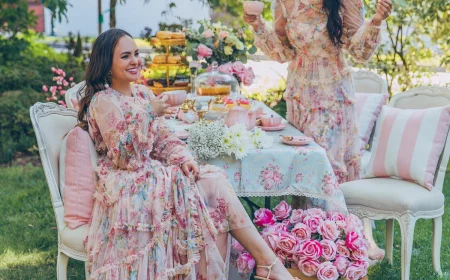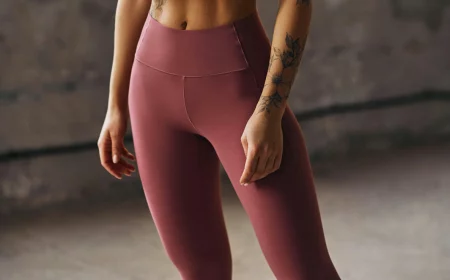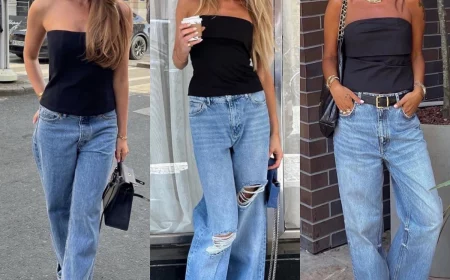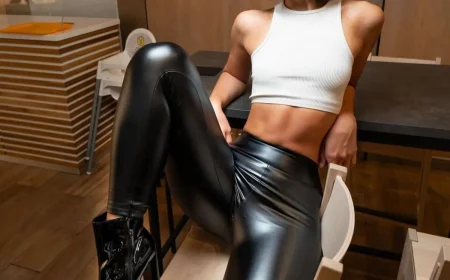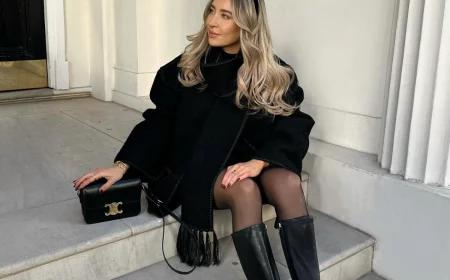Bringing Red Carpet Dreams to Life (Without the Drama)
After a couple of decades in the world of custom garment-making, you learn a few things. I’ve spent countless hours in my studio, surrounded by patterns, luscious fabrics, and the familiar hum of a sewing machine. And like clockwork, every year when the big fashion events roll around, my phone starts buzzing. Clients and friends send me these incredible photos of runway gowns—pure art, really—and they all want a piece of that magic for themselves.
In this article
They’ll show me a picture of some breathtaking creation and ask, “Can you make this for my wedding?” or “I want something like this for a black-tie party.” My first job, always, is to gently bring them back down to earth. I have to explain that what we see on the red carpet isn’t really clothing in the way we think of it. It’s costume. It’s engineered for a ten-minute walk in front of a thousand flashing cameras, not for dancing, sitting down for dinner, or trying to find a ride home.
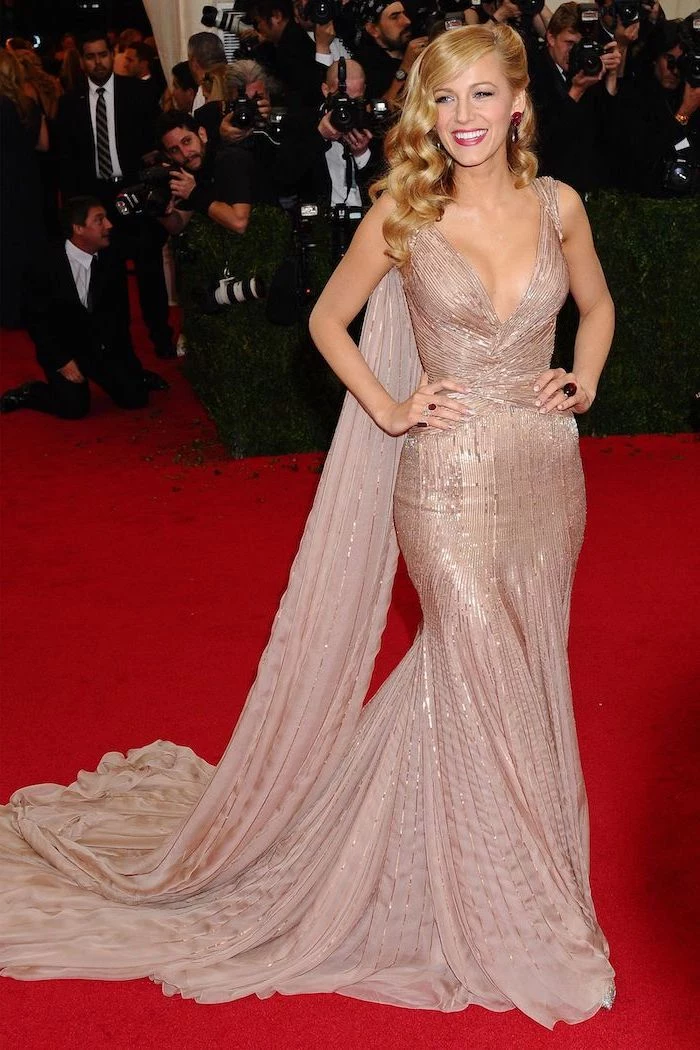
So, this isn’t about copying a look. It’s about translation. It’s about borrowing the spirit of a design and making it work in the real world. We’re going to look at how the pros deconstruct these fantasy gowns—the materials, the structure, and the clever tricks—to create something beautiful, practical, and uniquely yours.
Why That Gorgeous Gown Might Be a Real-Life Nightmare
Before you can adapt a design, you have to understand why it was made that way in the first place. High-fashion pieces are often all about pushing the limits of what fabric and construction can do. Getting a grip on these principles is the first step to making smart changes.
The Hidden Engineering: Weight and Structure
Many of the most jaw-dropping red carpet gowns are heavy. And I mean really heavy. A dress covered in hand-sewn crystals or elaborate beading can easily top 30 pounds. All that weight has to go somewhere. In a professional studio, we build a complex internal foundation to handle the load. This is way more than a simple lining.
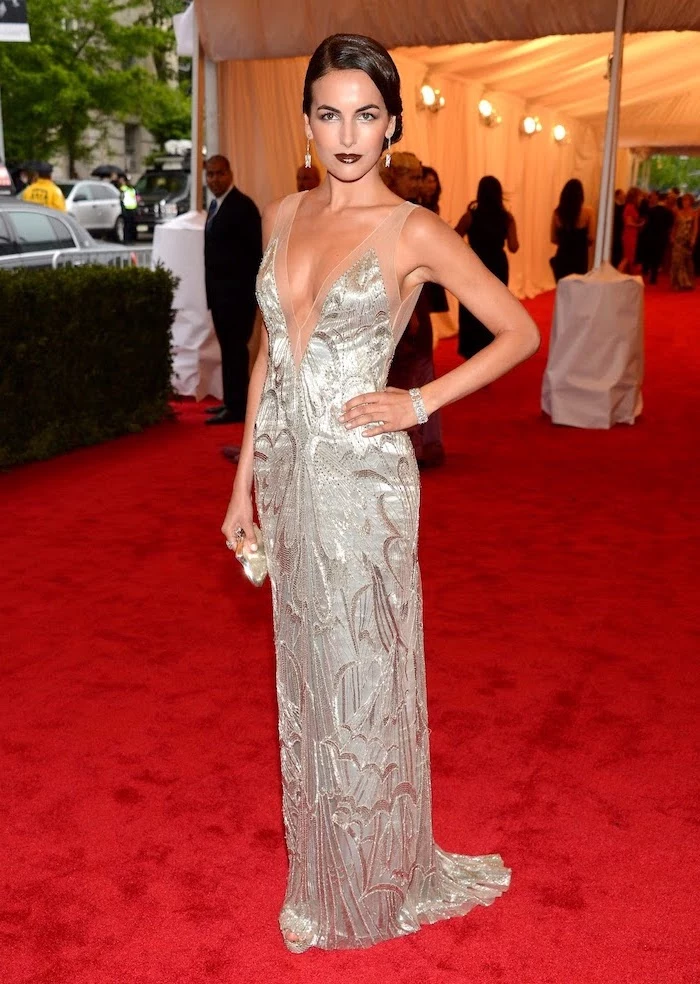
Often, it starts with an integrated corselet or bustier made from super-strong, non-stretch fabrics like coutil. It’s then boned with a mix of spiral and flat steel boning, just like a traditional corset. This masterpiece of engineering anchors the gown’s entire weight to the torso—the strongest part of the body. Without it, the delicate shoulder seams would tear, and the whole thing would sag. A common trick is to add a waist stay, which is a sturdy strip of twill tape that cinches at your natural waist inside the garment. It does an incredible job of bearing the load. The pretty silk on the outside? It’s just along for the ride; the inner structure is doing all the heavy lifting.
Fabric, Flashbulbs, and Function
Fabrics for these events are often chosen for how they look under intense lighting. Stiff materials like silk gazar or taffeta create those big, sculptural shapes that hold their form, while liquid satins catch the light beautifully. The problem? A lot of these fabrics are, frankly, a pain to wear for more than an hour.
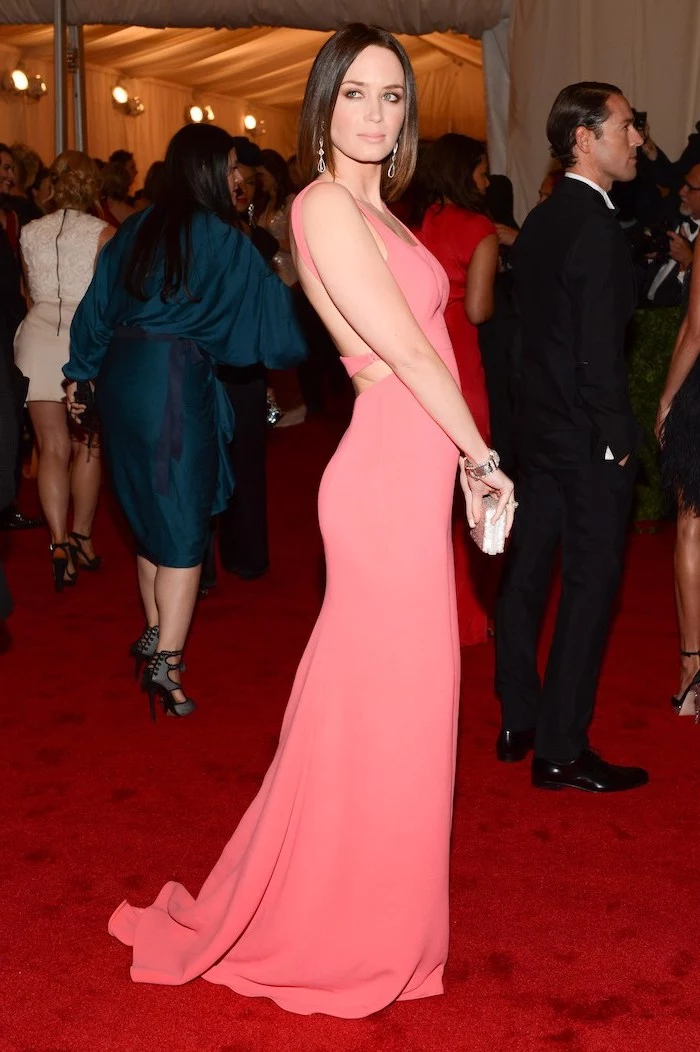
Let’s talk specifics:
- The Runway Pick: Silk gazar. It’s crisp and almost paper-like, perfect for a collar that stands up on its own.
- The Real-World Problem: The moment you sit down, it will crease like you wouldn’t believe. It’s also not very comfortable.
- A Great Alternative: A heavy silk crepe or even a quality triple-crepe polyester. You still get that luxurious weight and beautiful drape, but it’s way more forgiving and feels amazing to wear.
Another one is metallic lamé. It looks incredible in photos, but it shows every single line and bump, and it absolutely does not breathe. For a client’s actual event, I’d guide them toward something more practical that gives a similar vibe without making them miserable.
The Mobility Question
Ah, the dramatic mermaid gown. It’s a classic for a reason—it looks stunning. But it can also severely restrict your movement, forcing you into tiny, shuffling steps. That’s fine for posing, but a total disaster for navigating a crowded room or, you know, sitting down.
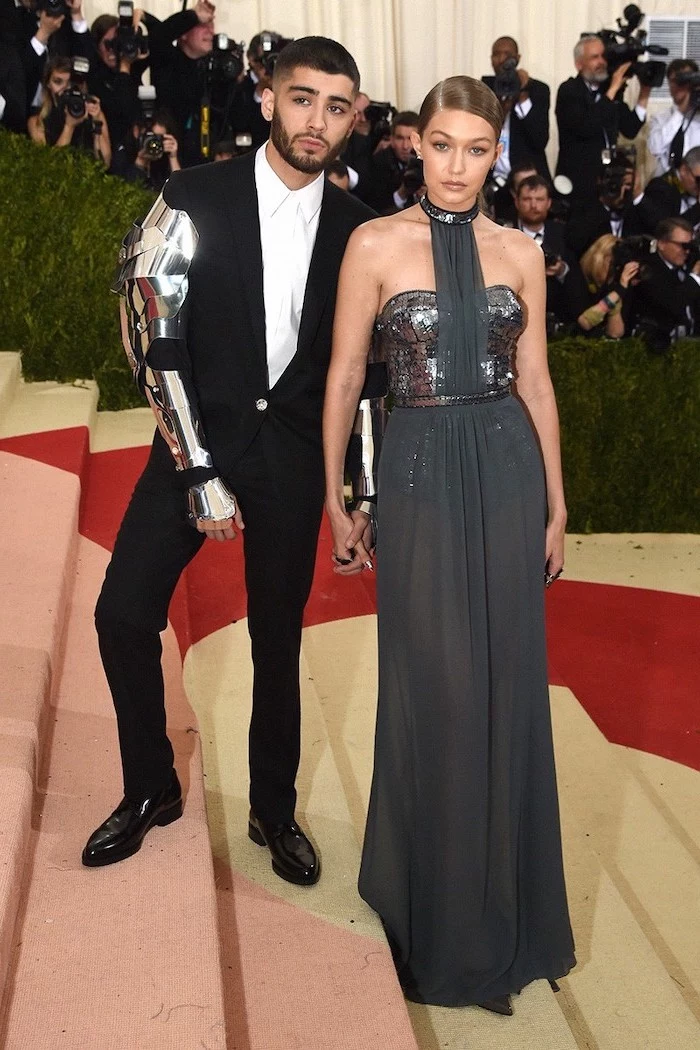
When a client wants this look, my first question is always, “So, how much do you actually need to move?” To make it wearable, we adjust the proportions. We might start the flare a bit higher, just below the hip, or secretly add triangular fabric inserts, called godets, into the lower seams to give more leg room. This is something we perfect during the mock-up fitting. I have my clients walk, sit, and even do a little twirl in the studio. If they can’t move with ease, the design has failed, no matter how good it looks standing still.
The Art of the Adaptation: What to Keep, What to Change
Adapting a couture look is all about pinpointing its soul. Is it the wild silhouette? The bold color? The surface texture? Or is it one knockout detail, like a giant bow? You can’t have it all, so you have to choose what matters most.
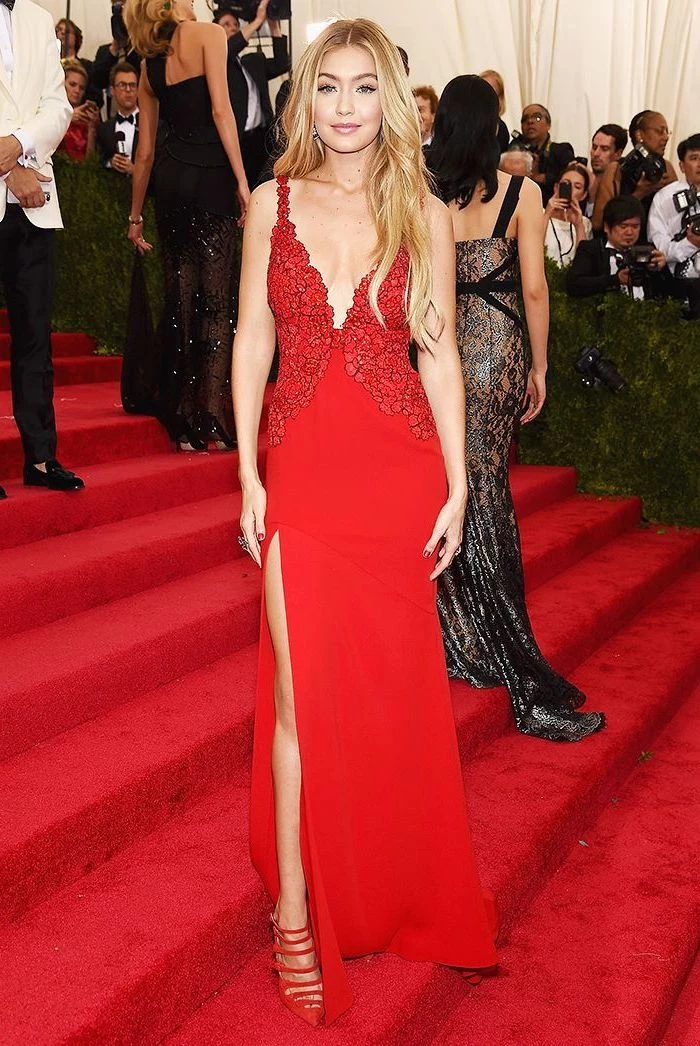
Taming the Silhouette
Extreme shapes are a hallmark of avant-garde fashion. To make them work for a real person, you have to scale down the proportions and simplify the construction.
- For Volume: A runway gown might use a rigid cage crinoline and 50 yards of fabric. To get a similar feel without the bulk, you can use layers of soft tulle and a more flexible hoop petticoat. It creates a beautiful shape that’s lighter and way easier to move in.
- For Length: That dramatic train is a magnet for high heels and spilled drinks. A practical alternative is a floor-length gown with a subtle dip hem at the back. Or, my personal favorite for formal events, a detachable train. You get your grand entrance, and then you can unhook it and dance the night away.
- For a Close Fit: Instead of relying on unforgiving stretch fabrics, a better approach is killer patterning. Perfectly placed darts and seams, tailored to your body, can create a sleek, close fit that’s still surprisingly comfortable.
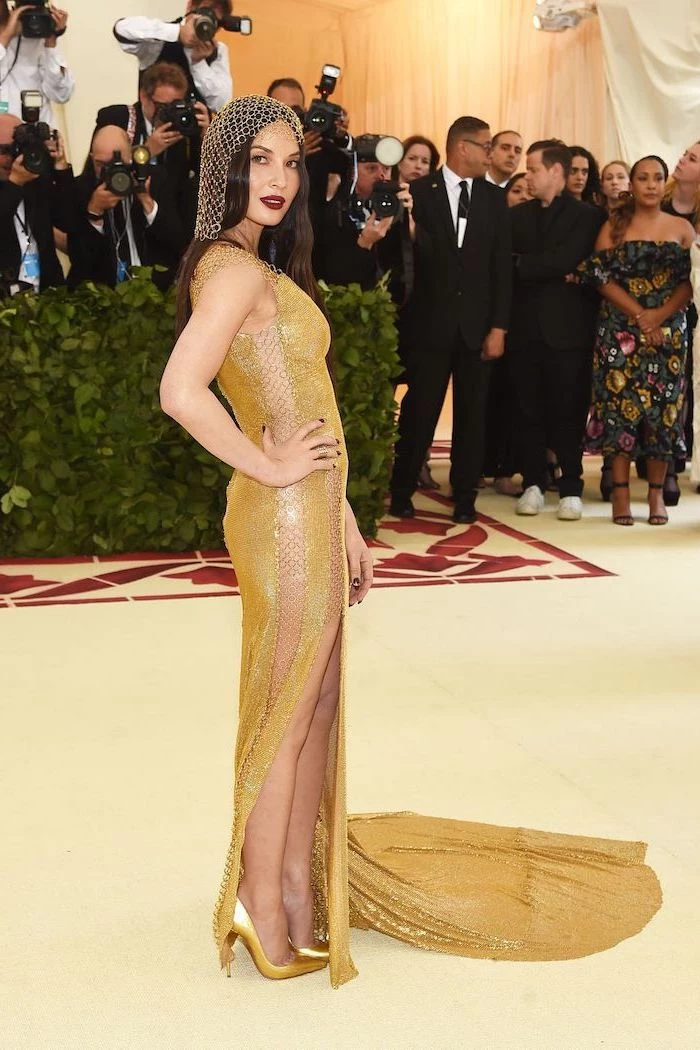
Finding Fantastic, Practical Fabrics
Let’s be honest, you’re probably not going to get your hands on the exact hand-painted silk organza from a Parisian atelier. But you can find amazing alternatives. Building a relationship with a good fabric supplier is key—they’re a goldmine of knowledge. For high-quality silks, boning, and specialty notions, I often turn to major online retailers like Mood Fabrics or more specialized shops that cater to costumers and custom dressmakers.
Let’s say the dream gown is made of a unique, expensive textile. A clever adaptation could involve a high-quality printed chiffon or a digitally printed georgette that captures the same artistic feel for a fraction of the cost. Always, and I mean always, get a swatch first. You have to see how it moves, how it feels, and what the color looks like in person. A 4-inch square of fabric can save you hundreds of dollars and a lot of heartache.
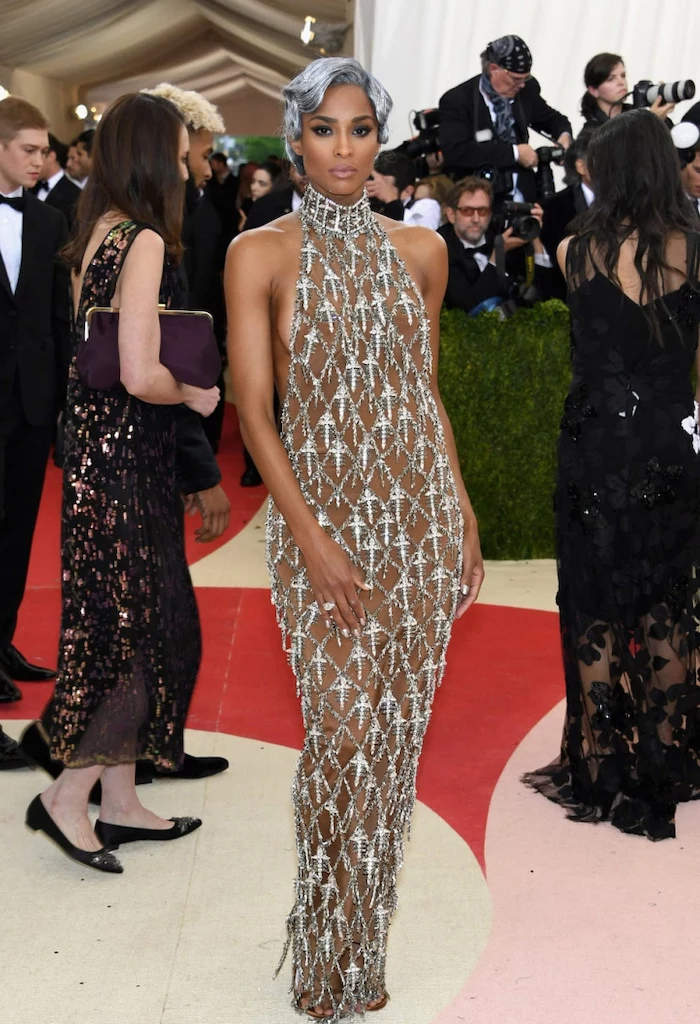
Scaling Down the Sparkle
A gown that’s completely covered in crystals is a masterpiece, but it’s also wildly expensive and takes hundreds of hours to create. A single square foot of dense beading can take a professional a full day of work. The smart move? Focus the embellishment.
Instead of beading the entire dress, consider a beautifully embellished neckline, a set of sparkling cuffs, or a dazzling belt. This gives you that luxe, detailed feel in a much more manageable (and affordable) way. You can also mix high-quality glass beads with less expensive sequins to create texture and shine without blowing the budget. And please, hand-sew your beads. Glued-on rhinestones are a dead giveaway of a cheap imitation and they will fall off.
Pro-Level Techniques for a Flawless Finish
The real difference between a homemade costume and a custom garment lies in the techniques. These are the non-negotiables that create a truly superior result.
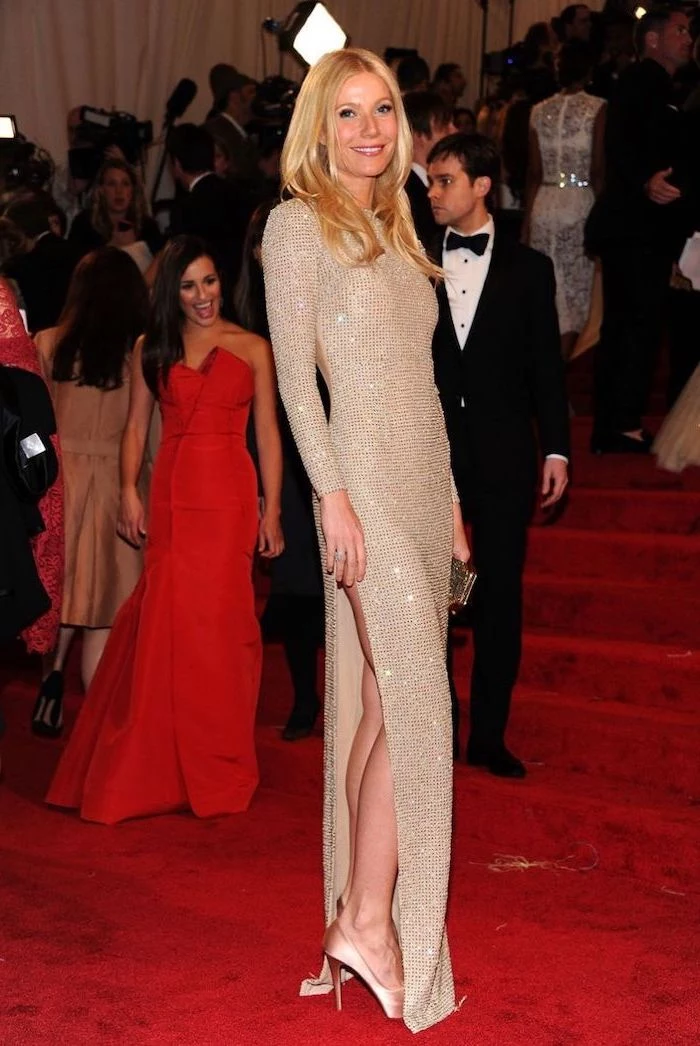
The Mock-Up is Non-Negotiable
I cannot say this enough: you must make a mock-up, or what we call a “toile.” Cutting right into that pricey fashion fabric is the fastest way to ruin your project. A toile is a practice version of the garment made from cheap cotton muslin, which usually costs just $3 to $5 a yard.
Here’s the quick-and-dirty on how it works: You cut your pattern from the muslin, stitch it together roughly, and try it on. This is where you fix everything—adjusting the fit, moving seam lines, checking proportions. You mark all your changes with a pencil right on the fabric. Then, you take the whole thing apart, and those marked-up muslin pieces become your new, perfected pattern. It seems slow, but it’s the single most important step. Trust me.
The Power of What’s Underneath
The right underpinnings are your secret weapon. They create a smooth canvas for the dress to drape over. For more structured looks, I often build lightweight boning channels or bra cups directly into the bodice lining. This gives you shape and support without a separate, bulky corset. For sheer gowns, a nude-colored bodysuit or full slip is your best friend. The goal is for the foundation to be completely invisible while it does its job perfectly.
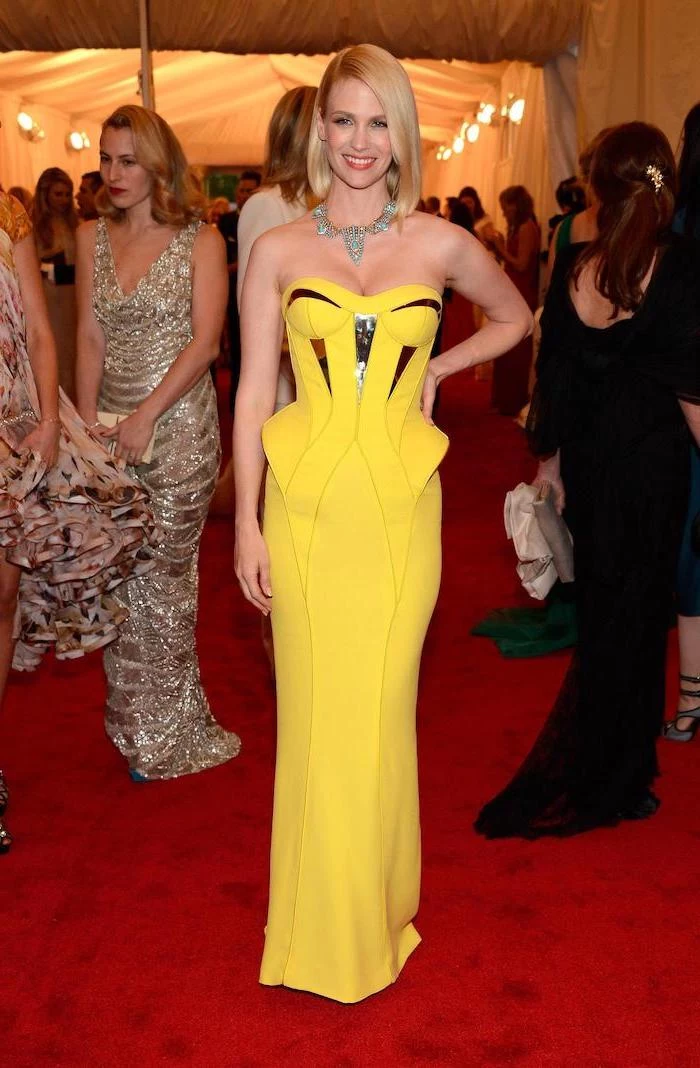
It’s All in the Finishing
Small details scream quality. Instead of a standard machine-sewn zipper, learn how to do a hand-picked application. It’s a technique where you use tiny, almost invisible stitches from the outside to set the zipper, giving a much cleaner, high-end look. You can find tons of tutorials for it online.
Instead of a serged hem, choose a finish that suits the fabric—a delicate hand-rolled hem for chiffon or a horsehair braid hem to give a full skirt that beautiful, structured ripple. The inside of the garment should be just as beautiful as the outside. It’s time-consuming, but this is what separates good from great.
A Realistic Look at Your Project
Creating a high-end garment is a serious undertaking. It’s so important to be real about the costs, the time, and your own skill level.
Heads up! A project like this is an investment. Good silk can run from $40 to over $150 per yard, and you might need a lot of it. The time commitment is also huge. I’d budget a minimum of 40-60 hours for a relatively simple formal gown. For something with serious handwork, you could easily be looking at hundreds of hours. This is not a weekend project.
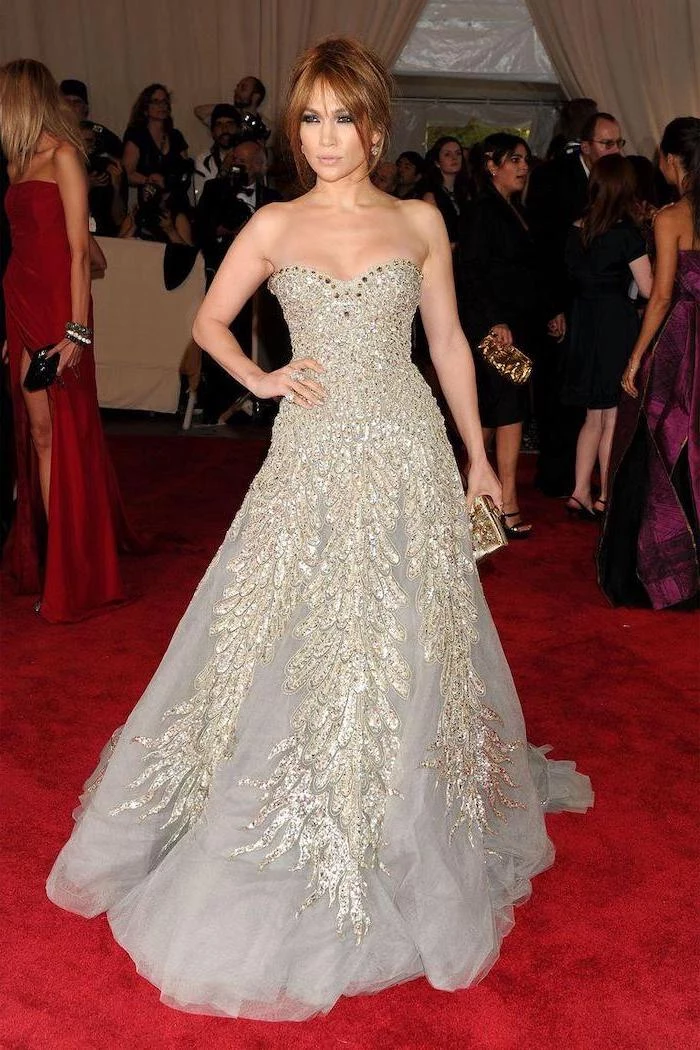
And a quick word on safety: Make sure your space is well-ventilated, especially if you’re ironing synthetic fabrics, which can sometimes release fumes. And if you’re doing a lot of beading, take breaks! Repetitive strain is no joke.
There are times when hiring a pro is the smartest move, especially if the design involves complex tailoring or expensive, tricky fabrics. If you go this route, ask to see a portfolio. Look at the inside of their garments—a great maker will be proud of their finishing. Clear communication is everything.
Ultimately, taking inspiration from the world of high fashion should be fun. It’s a chance to learn, to be creative, and to make something that makes you feel absolutely incredible. So, here’s a little challenge for you: Find a runway look you love. Now, just look at it and try to identify its core essence. Is it the shape? The color? A single detail? Figuring that out is the very first step in turning a fantasy into your reality.
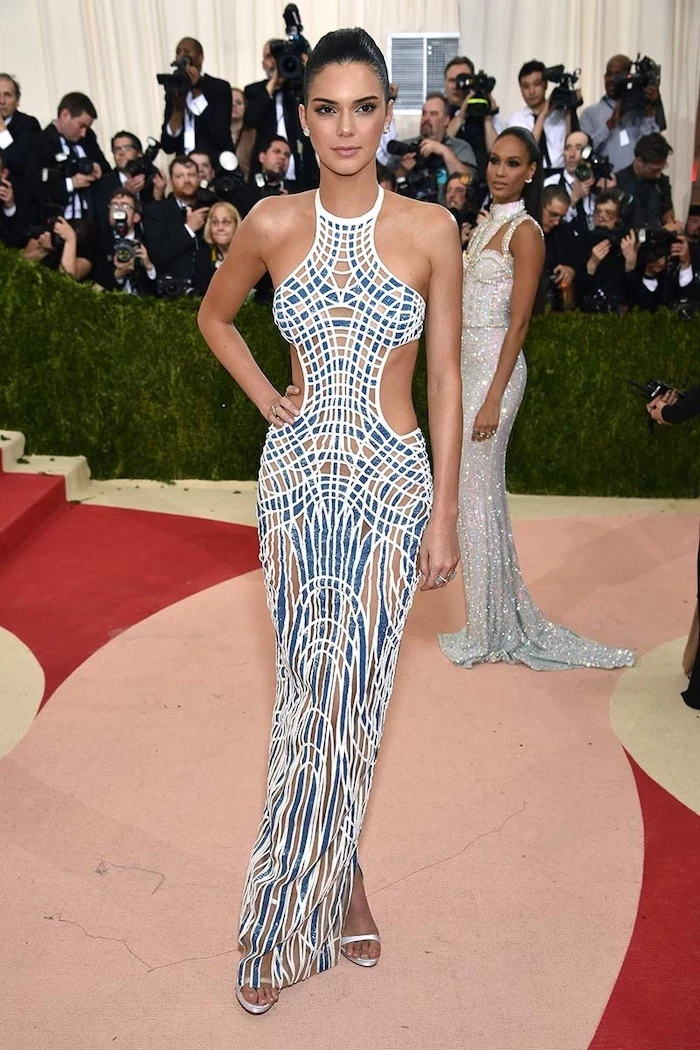
Inspiration Gallery
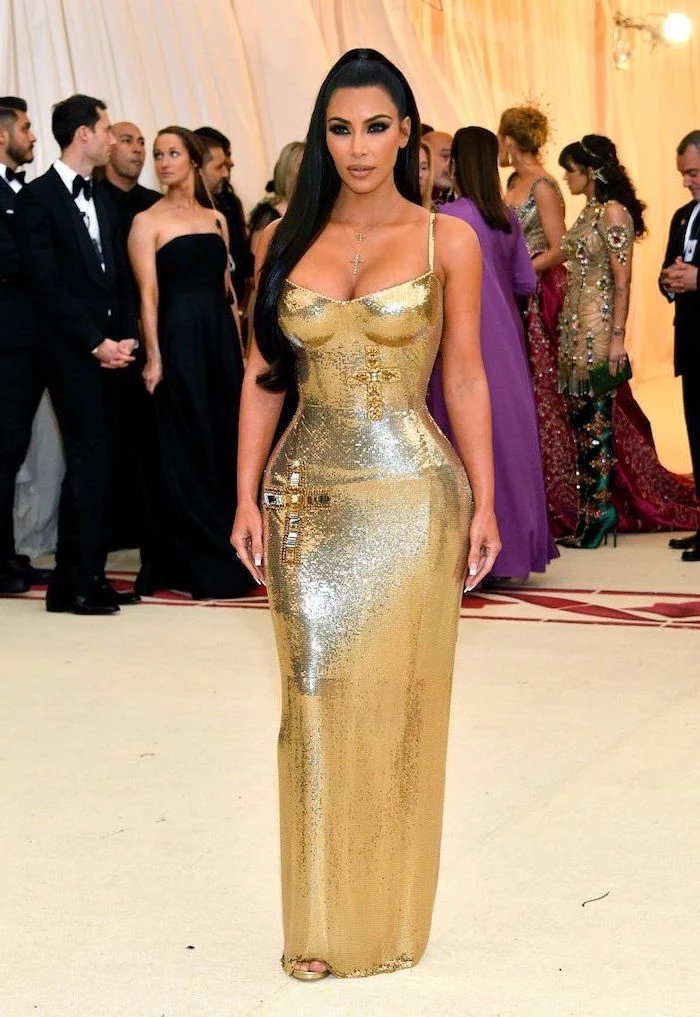
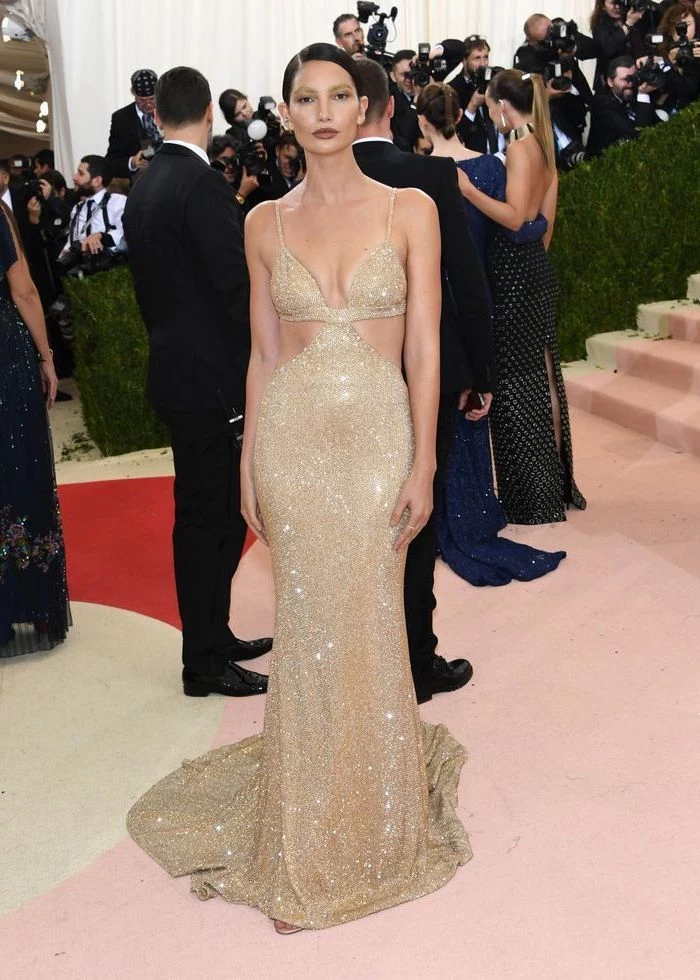
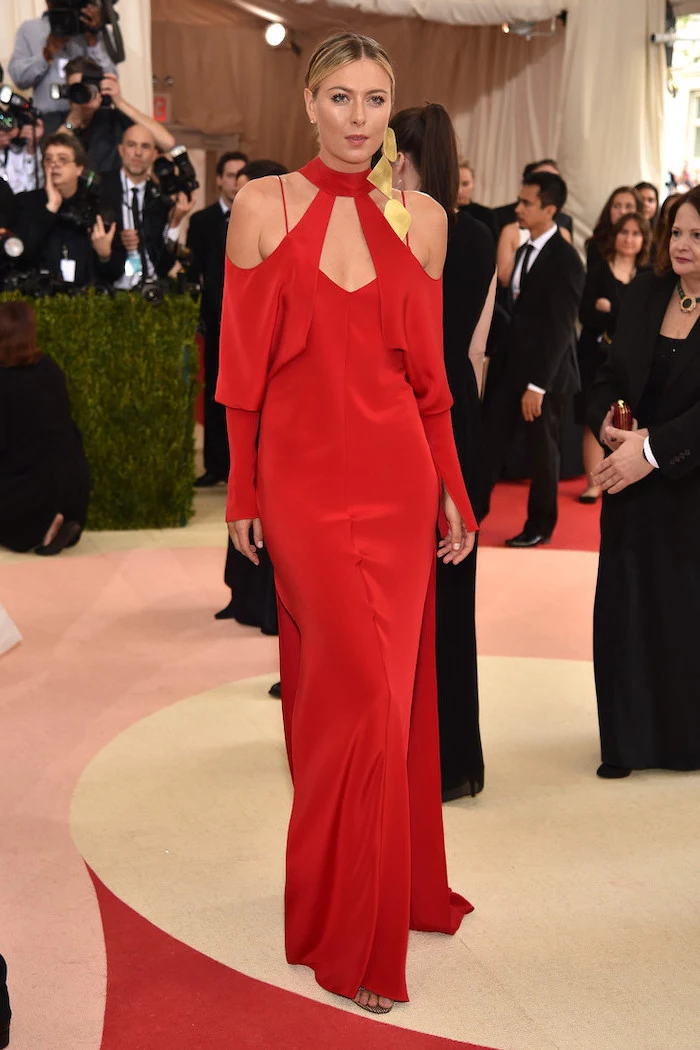
That ‘effortless’ red carpet look? It’s often the result of a small army. A celebrity has a dedicated team to manage the dress, fix stray threads, and ensure every fold is perfect for the cameras. For your real-life event, the goal is a dress that looks just as stunning without needing its own entourage.
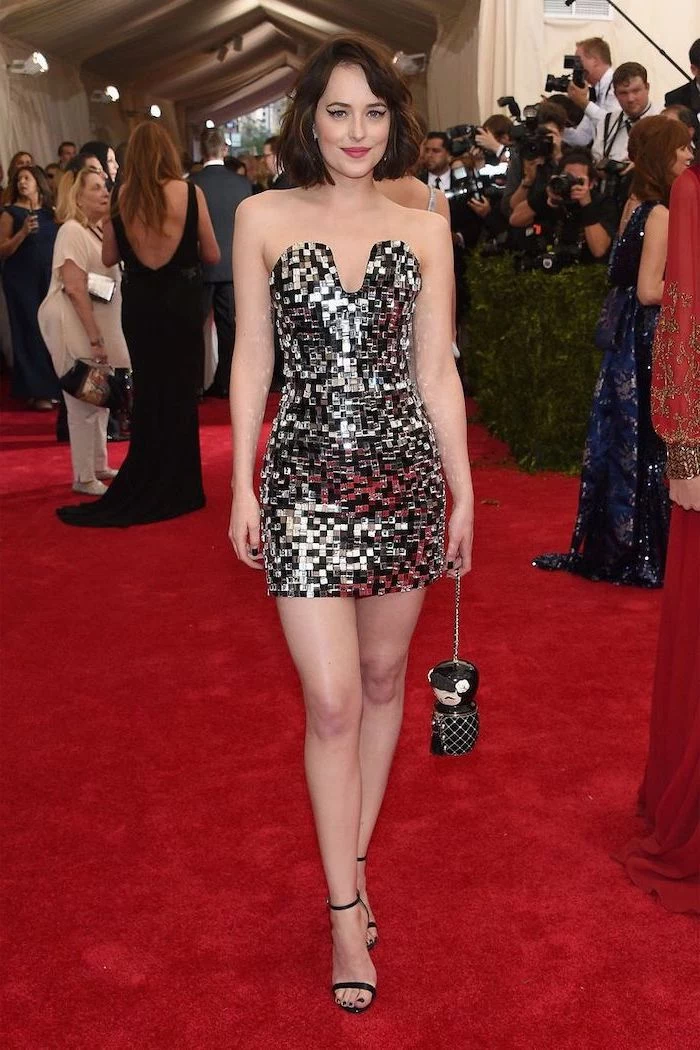
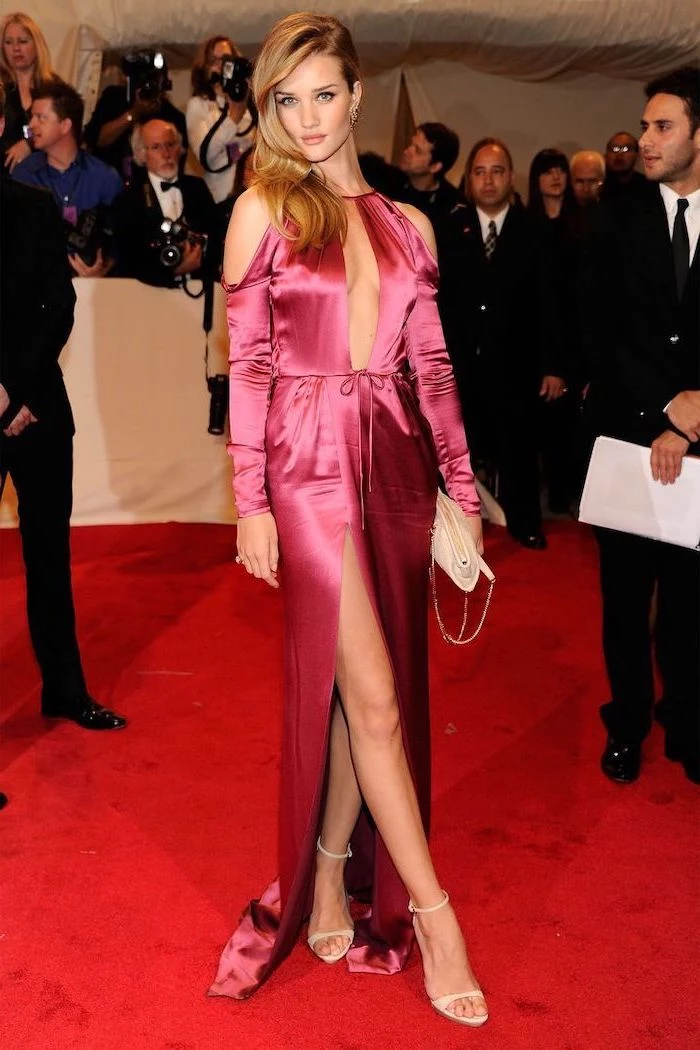
The Underpinning Secret: The success of a form-fitting or slinky gown lies not in the dress itself, but in what’s beneath. It’s non-negotiable. A high-quality seamless bodysuit from a brand like Spanx or Commando can be the difference between a smooth silhouette and a lumpy finish. For structured gowns, a built-in corselet is the professional’s choice.
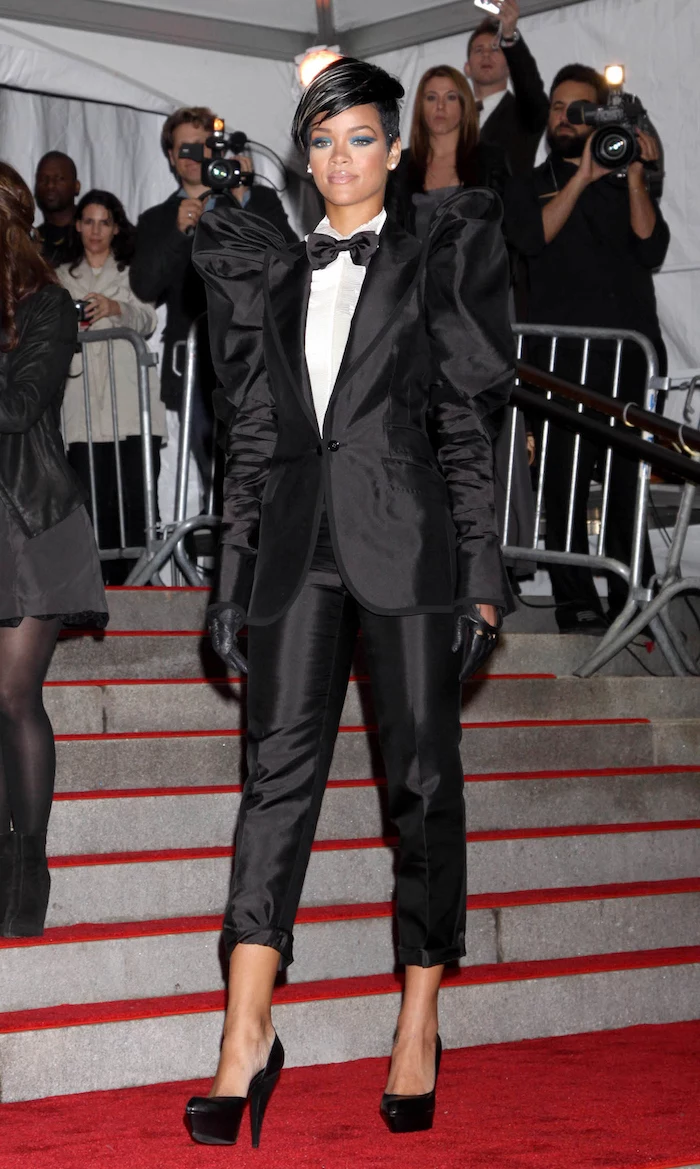
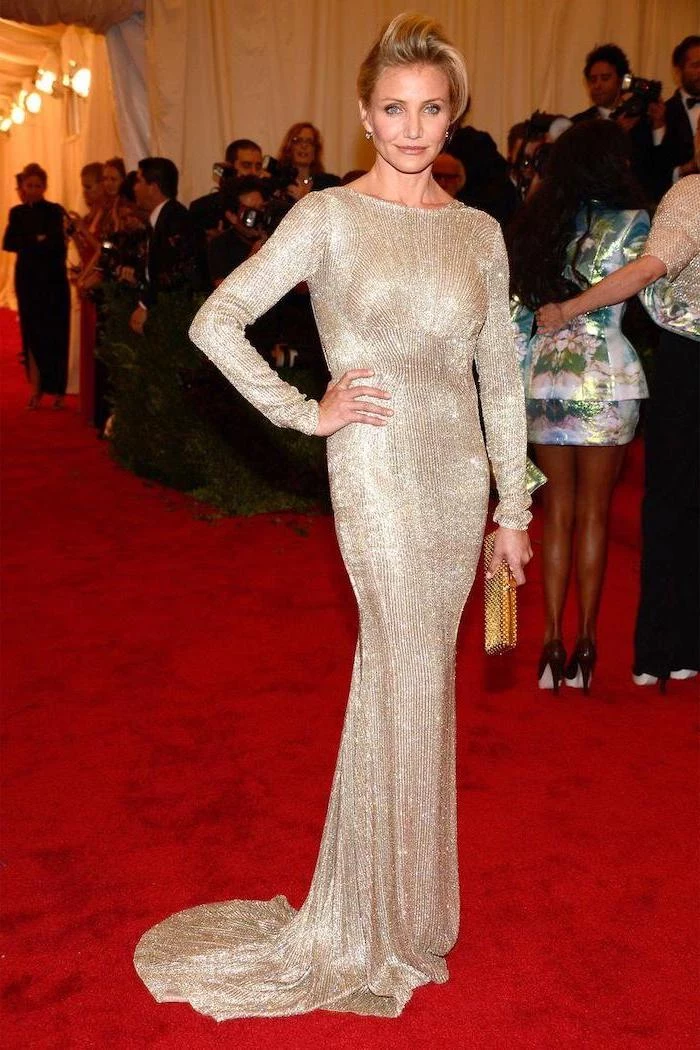
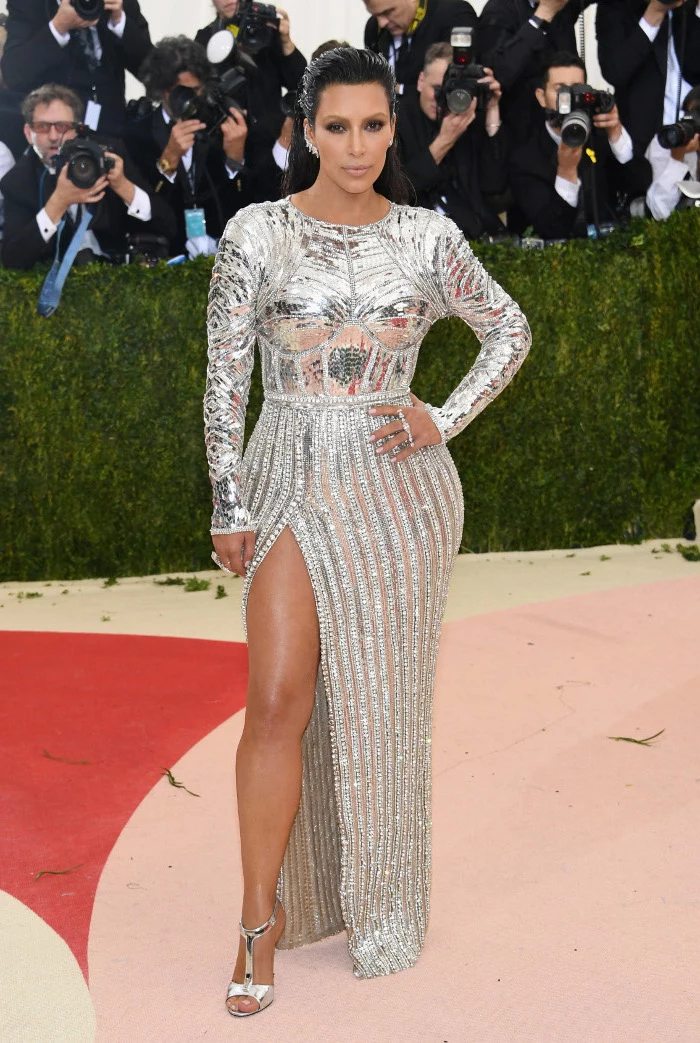
- Does the design allow for comfortable sitting during a multi-course dinner?
- Can I lift my arms to hug someone or dance?
- How will the train be managed on a crowded dance floor or in a restroom? (A ‘bustle’ is your best friend!)
Ask your dressmaker these three questions. The answers will guide you toward a design that’s both beautiful and practical.
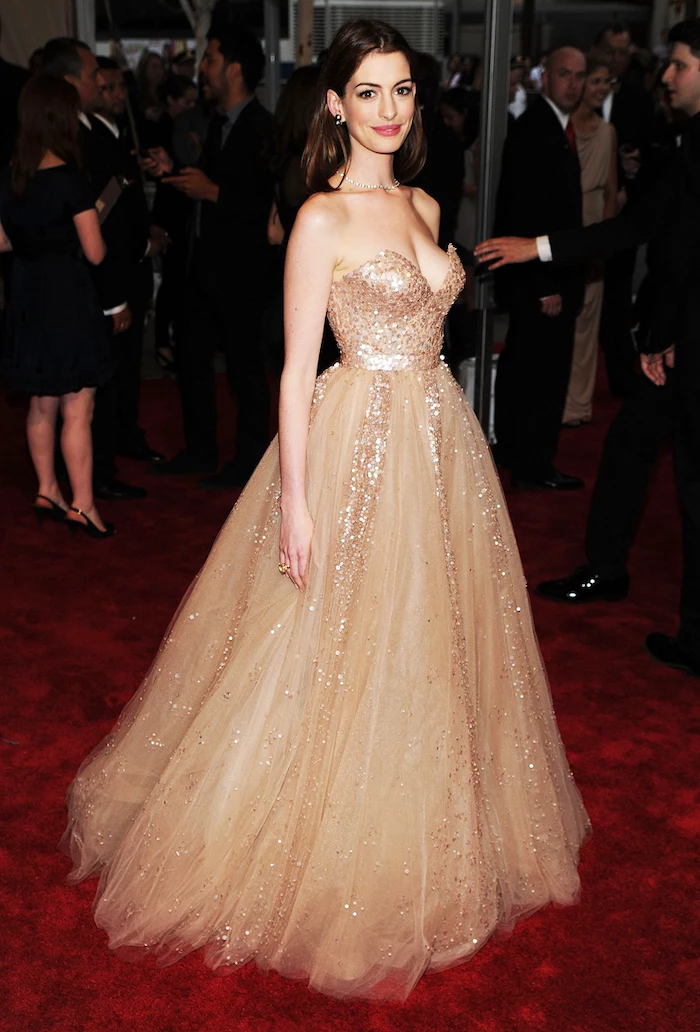
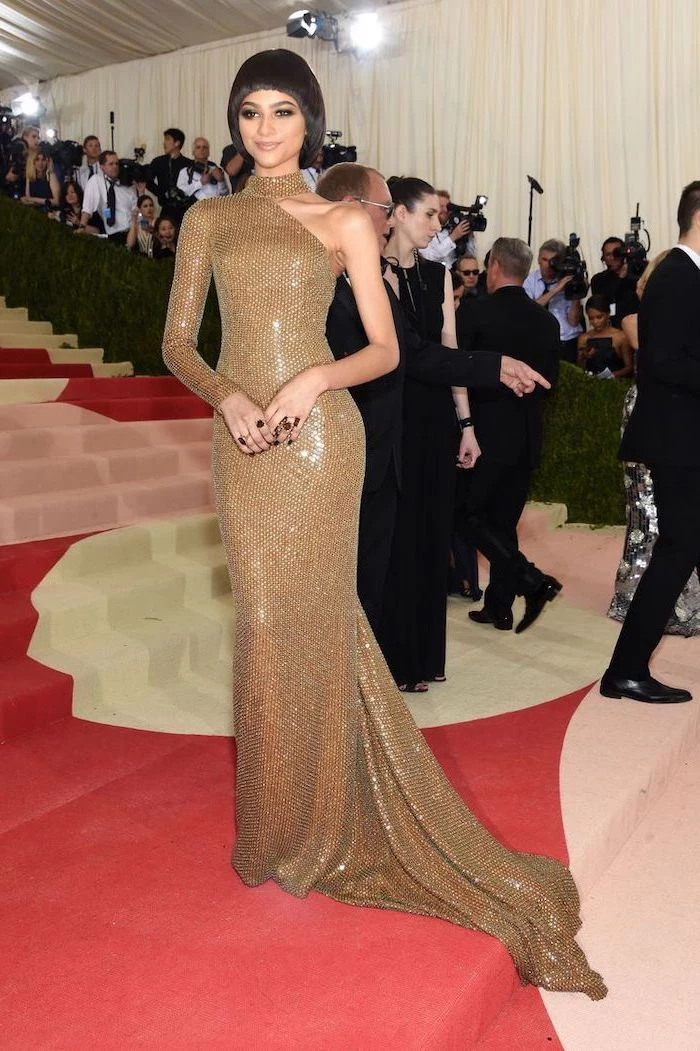
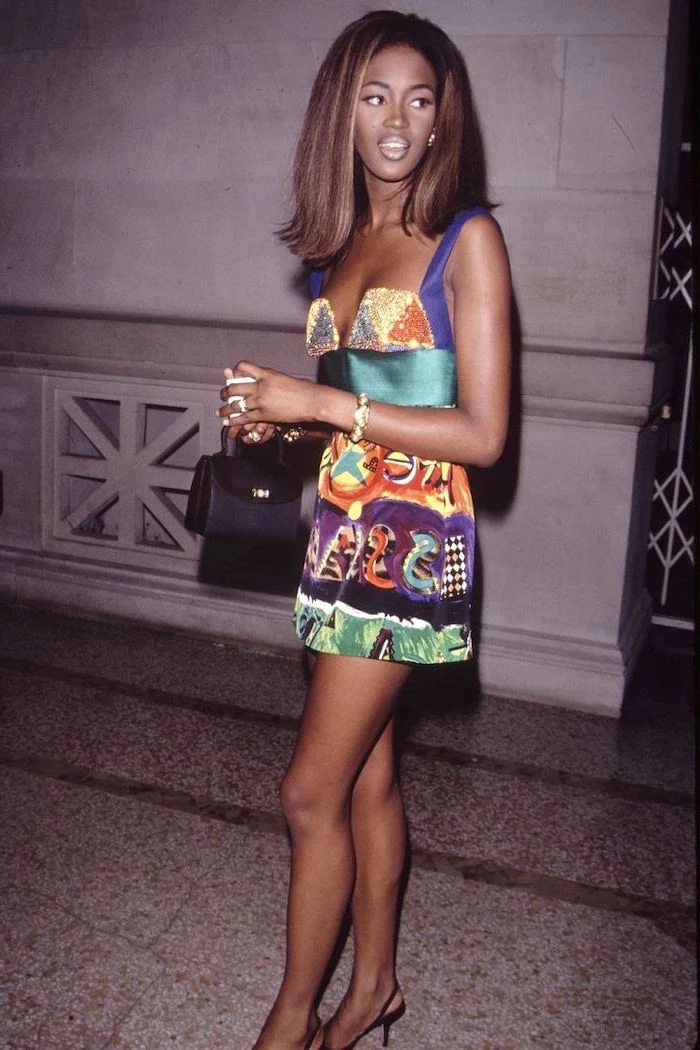
The embroidery on a single Chanel Haute Couture dress can require over 1,000 hours of work by the artisans at Maison Lesage.
To capture this spirit without the couture price tag, consider using pre-embroidered tulle or strategically placed beaded appliqués. You get the opulent texture and visual interest in a fraction of the time and cost.
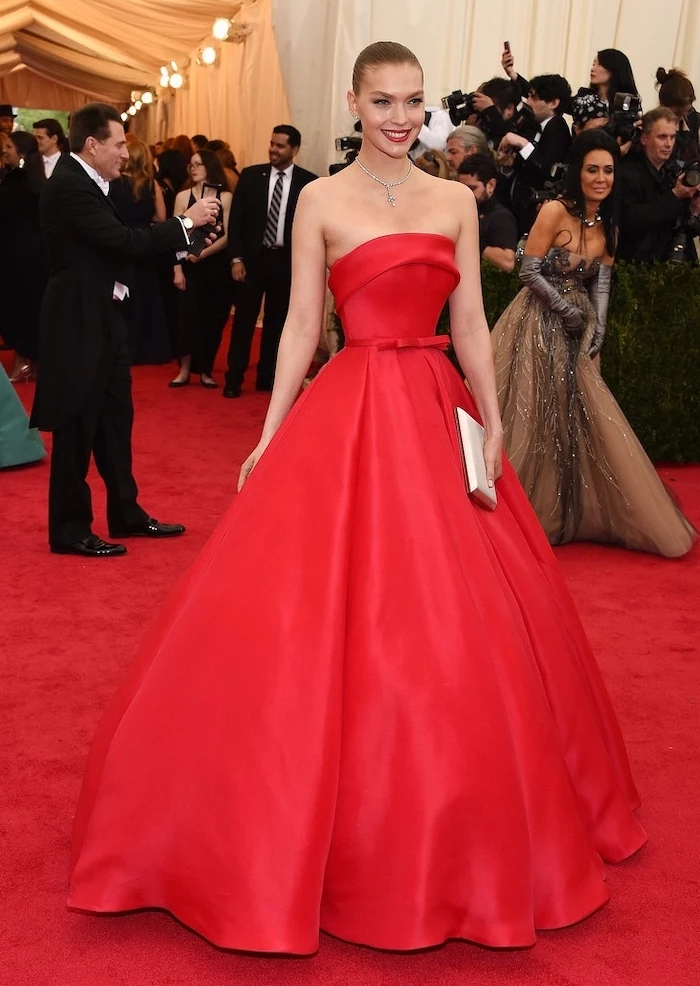
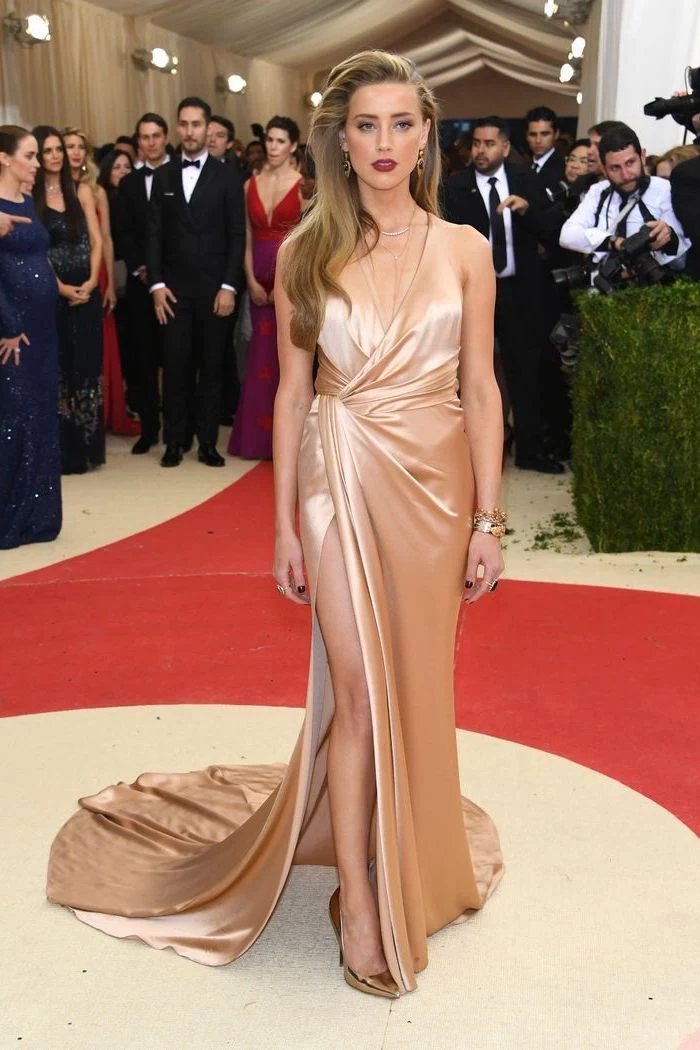
Can a ‘naked dress’ ever be truly wearable?
Yes, with clever engineering. The key is in the ‘illusion’. A dressmaker uses fine, skin-toned illusion tulle (like that from Hurel or Solstiss) as a base. Opaque elements like lace, beading, or silk patches are then strategically appliquéd to provide coverage exactly where needed, creating a daring look that’s securely held in place and offers more modesty than you’d think.
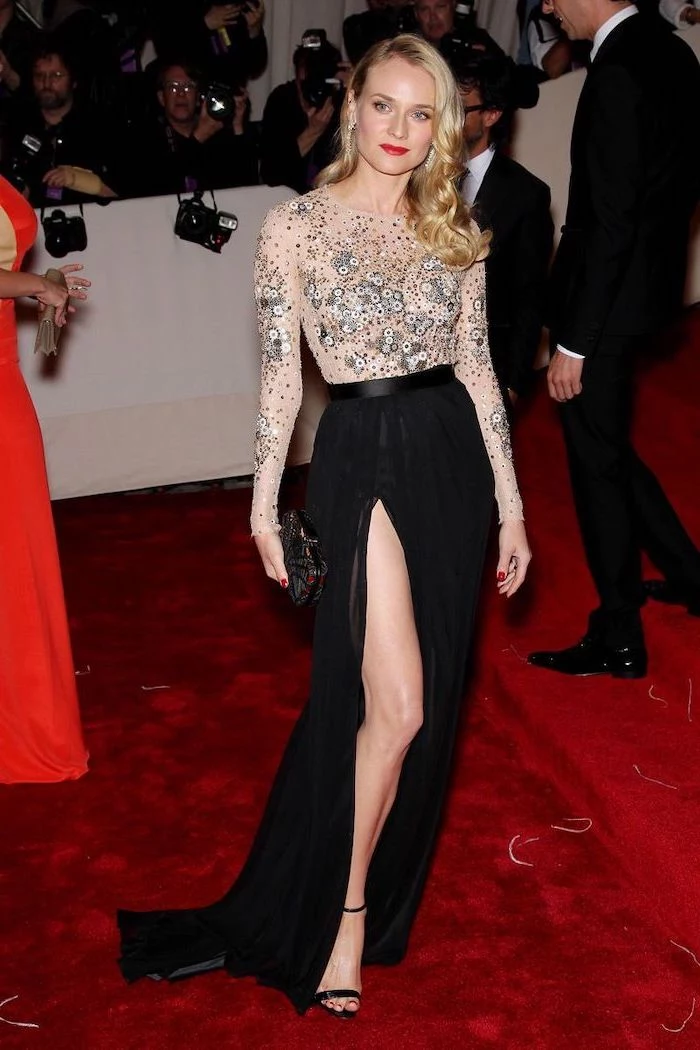
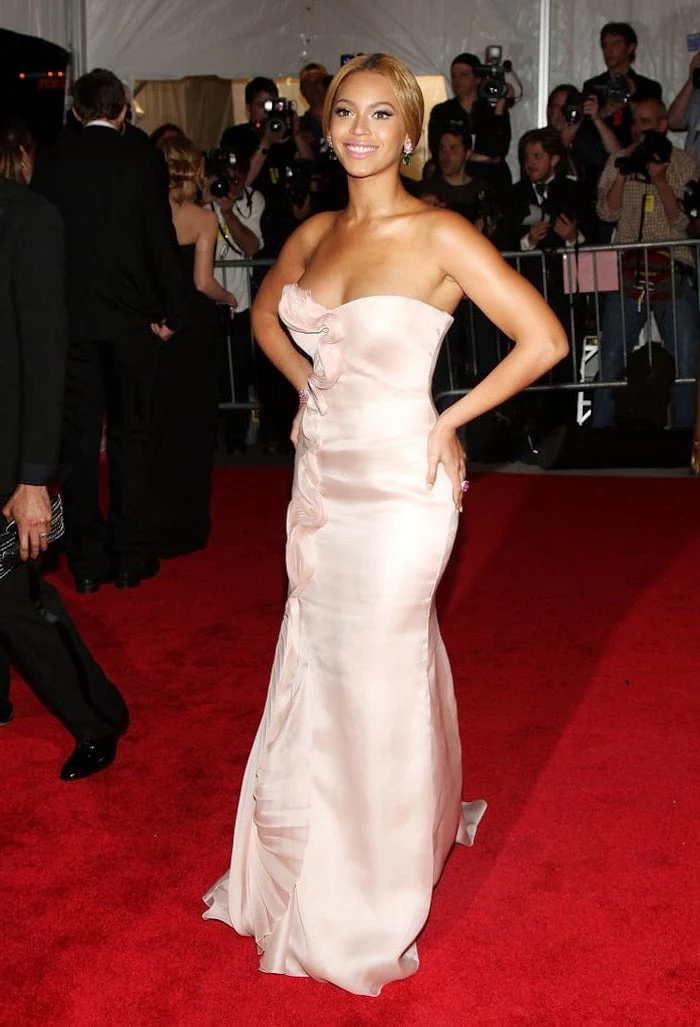
Silk Charmeuse: Unmatched for its liquid luster and fluid drape. It’s breathable and feels incredible against the skin, but it is delicate and unforgiving on sewing imperfections.
High-Quality Polyester Satin: A more durable and budget-friendly alternative. Modern versions have a beautiful sheen and better wrinkle resistance, making them great for travel or a long night of wear.
For that true Hollywood glamour, silk is king, but modern synthetics offer a stunning and practical compromise.
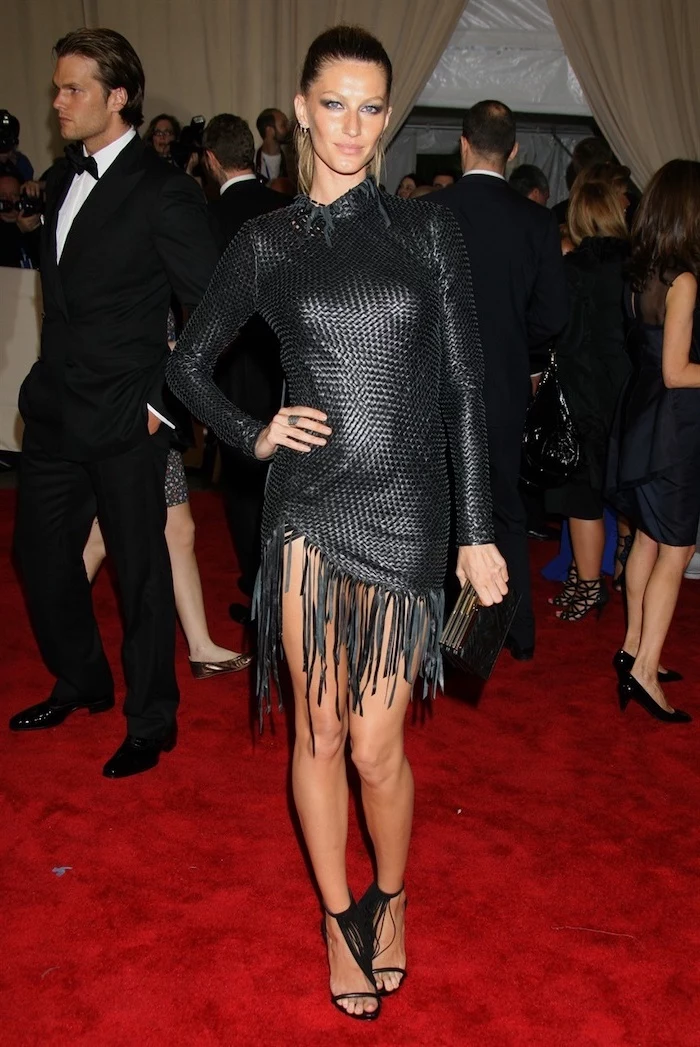
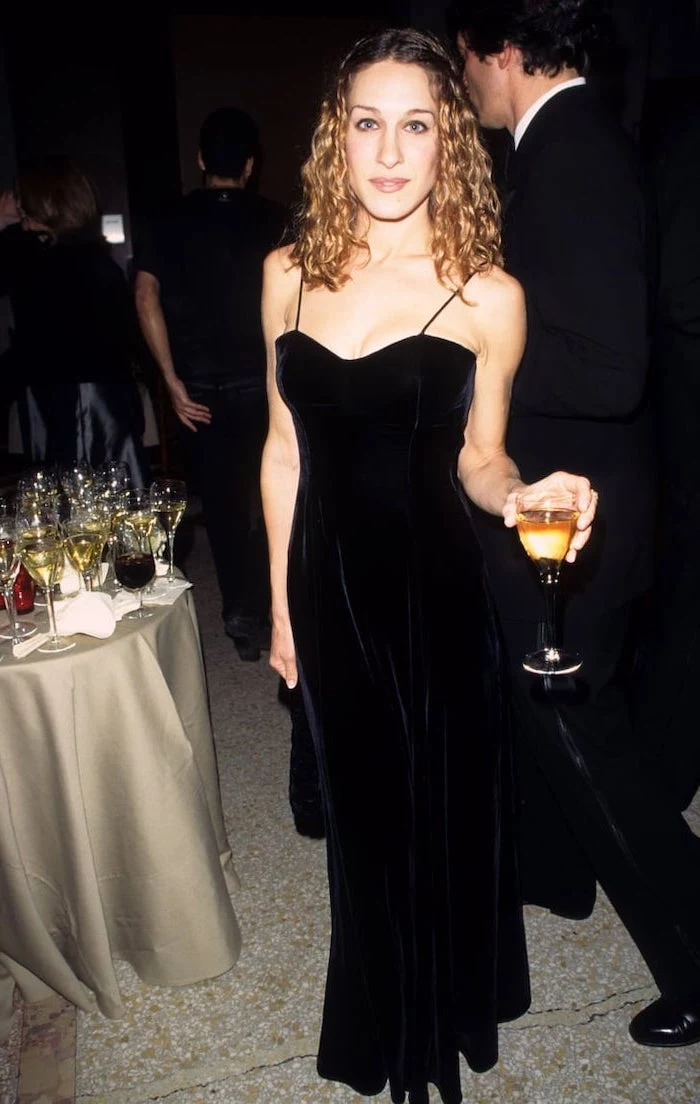
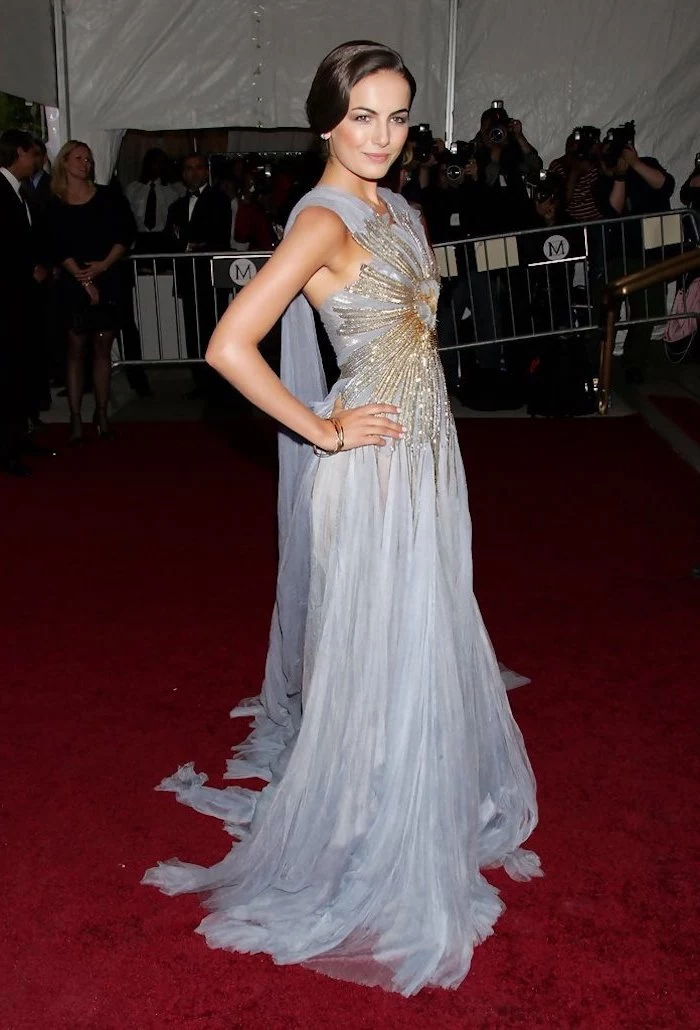
Let’s talk about the ‘swish factor’. The sound and movement of a skirt can define its character. A rustling taffeta ballgown feels regal and dramatic, while the soft whisper of silk chiffon around the ankles creates a romantic, ethereal mood. When choosing your fabric, close your eyes and imagine how it will move and sound as you walk into the room.
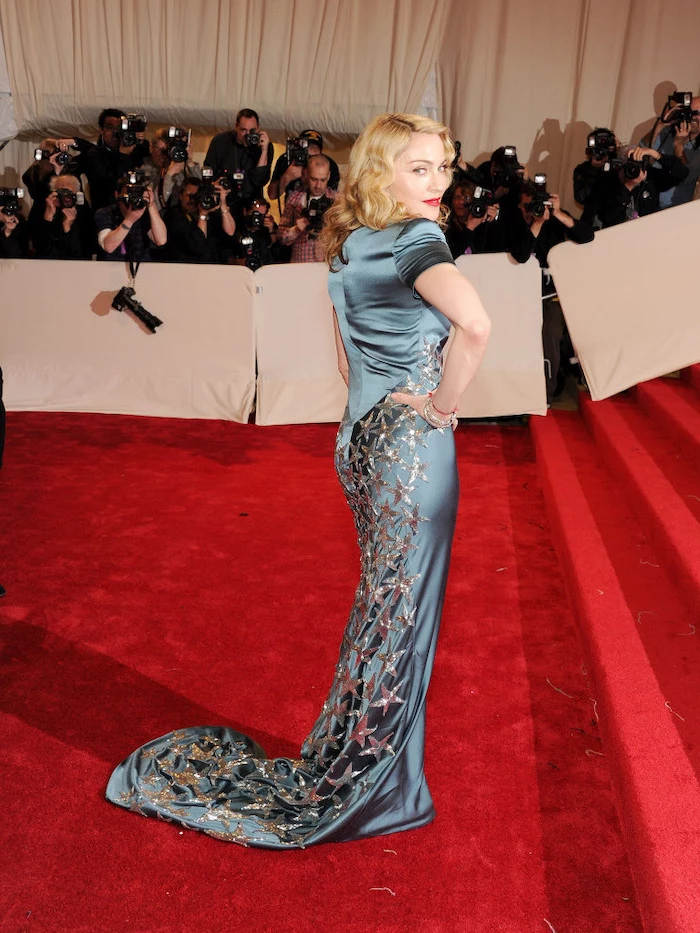
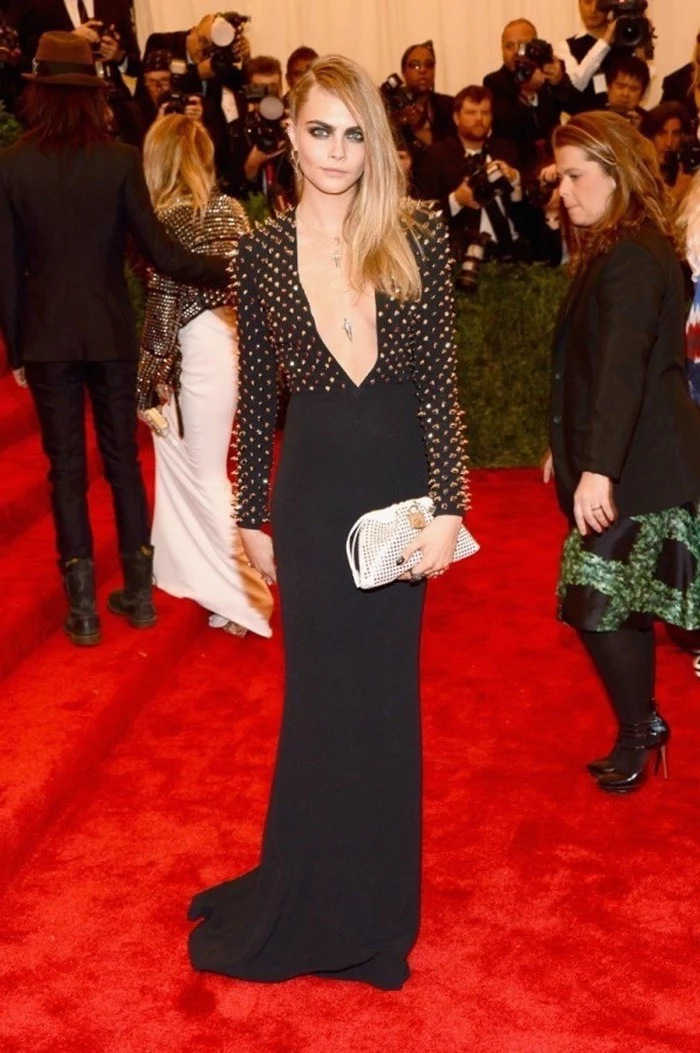
- Achieves a perfectly smooth silhouette.
- Eliminates distracting underwear lines.
- Supports the garment’s weight from the shoulders and waist.
The secret? Building a bodysuit directly into the gown. This is a high-end couturier trick that ensures the dress and its foundation move as one seamless piece.
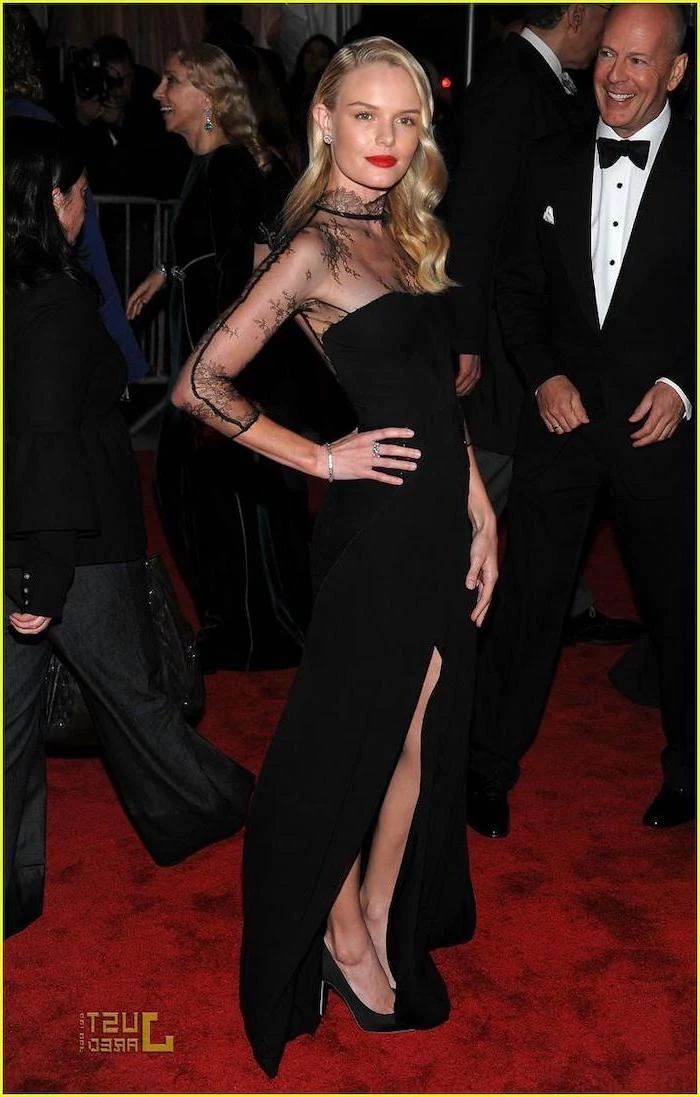
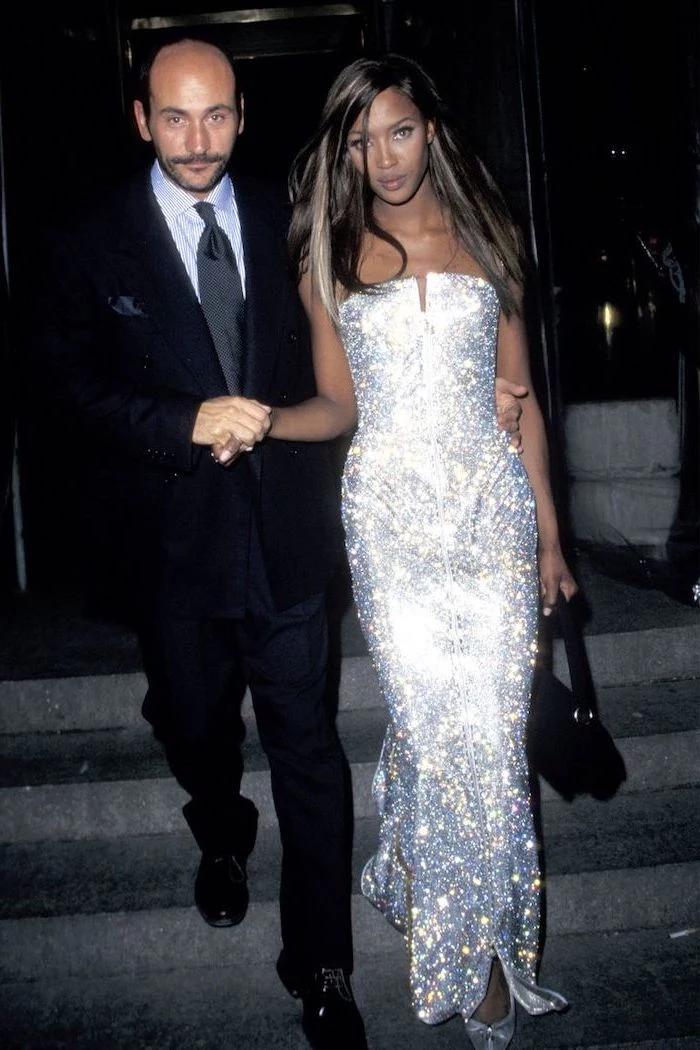
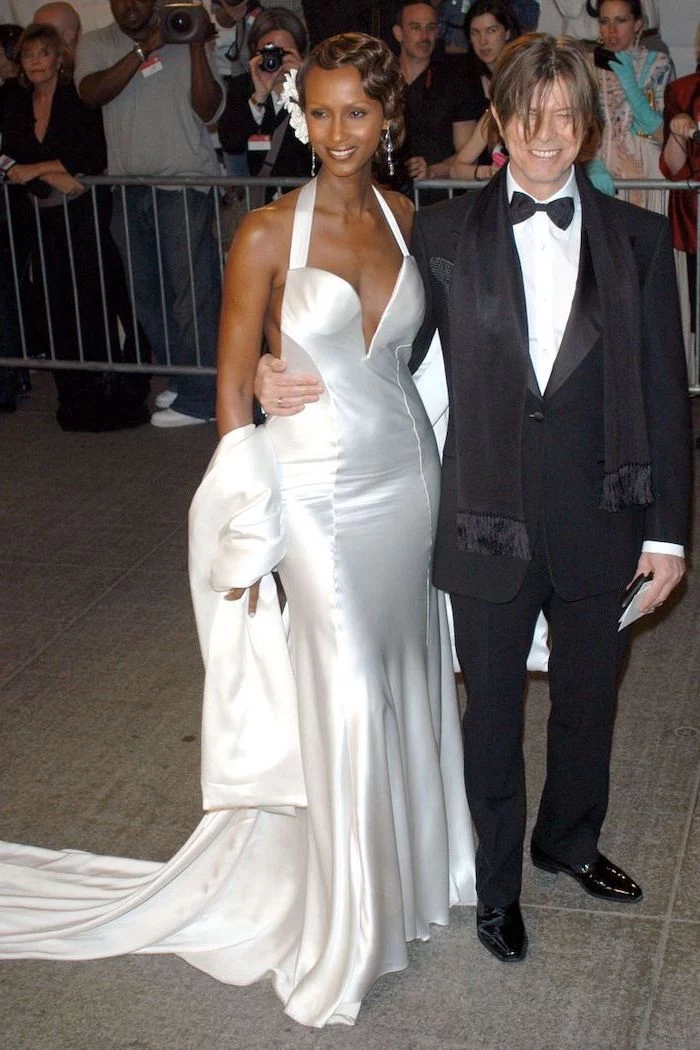
The Muslin Toile: Never skip this step. Before a single cut is made in your expensive fashion fabric, a couturier creates a mock-up of the gown in inexpensive cotton muslin. This ‘toile’ is where all the fit adjustments, neckline tweaks, and proportion checks happen. It’s the single most important fitting for achieving that truly bespoke, glove-like fit.
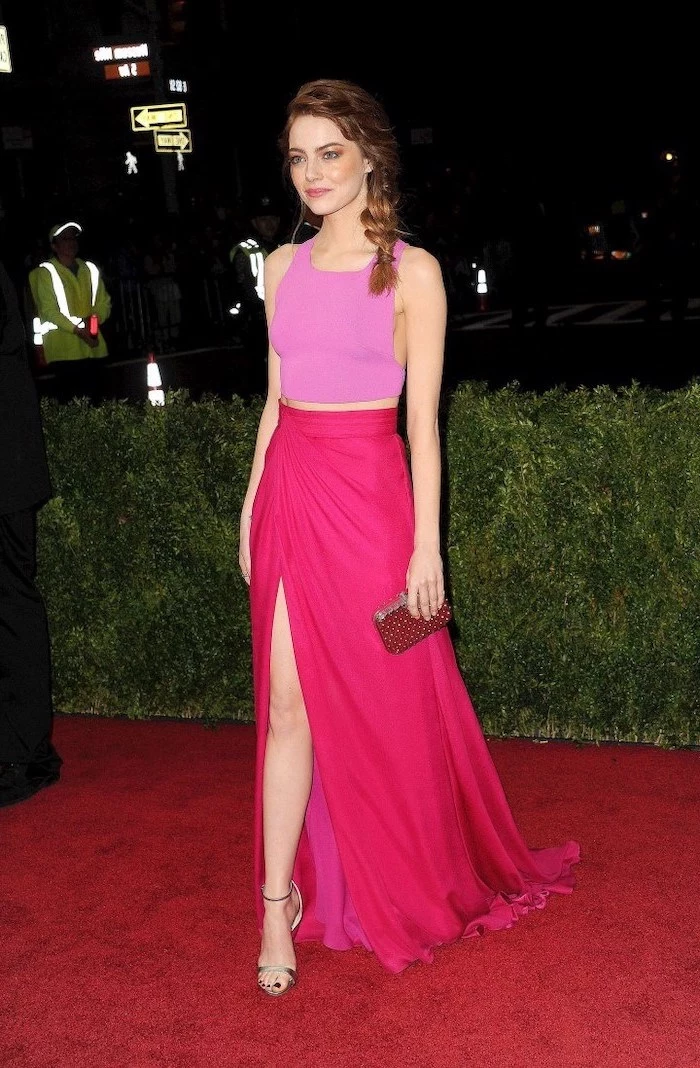
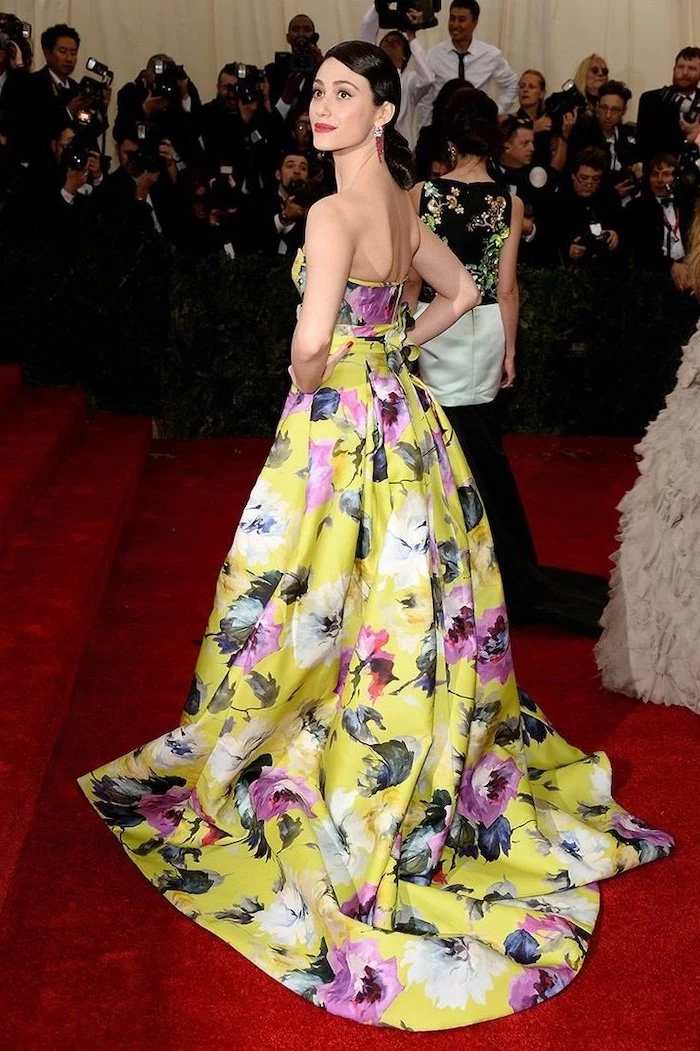
To get that high-impact sparkle, you have options. Hand-sewing thousands of individual Swarovski crystals creates unparalleled depth and fire, but it’s incredibly labor-intensive. For a more accessible approach, look at pre-beaded fabrics from specialty stores like Mood Fabrics. You can get a fully encrusted look or cut out motifs to apply onto a simpler base gown.
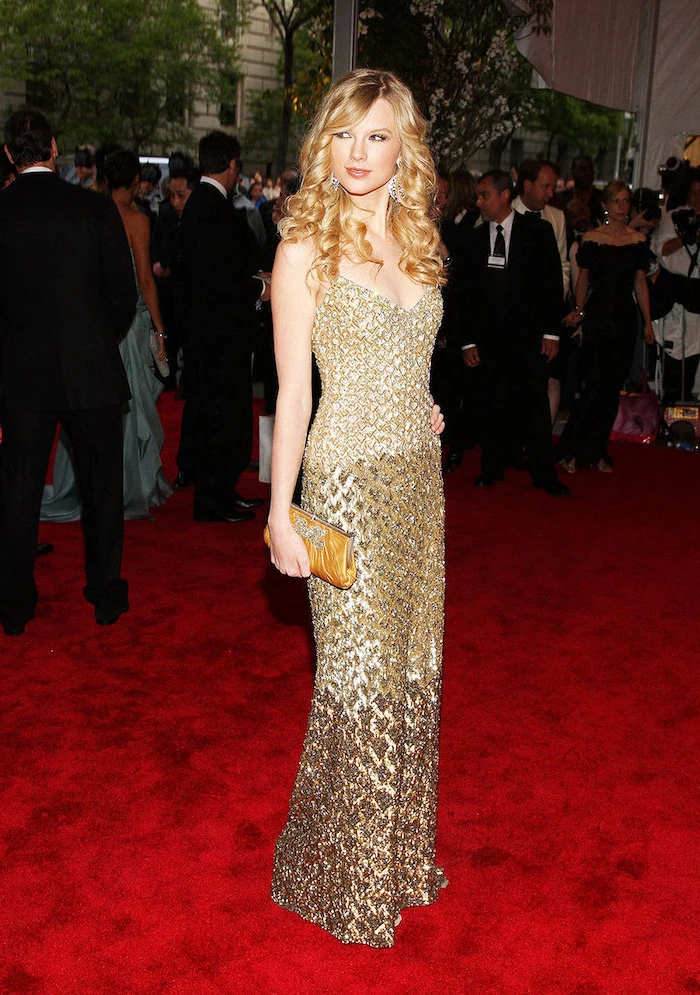
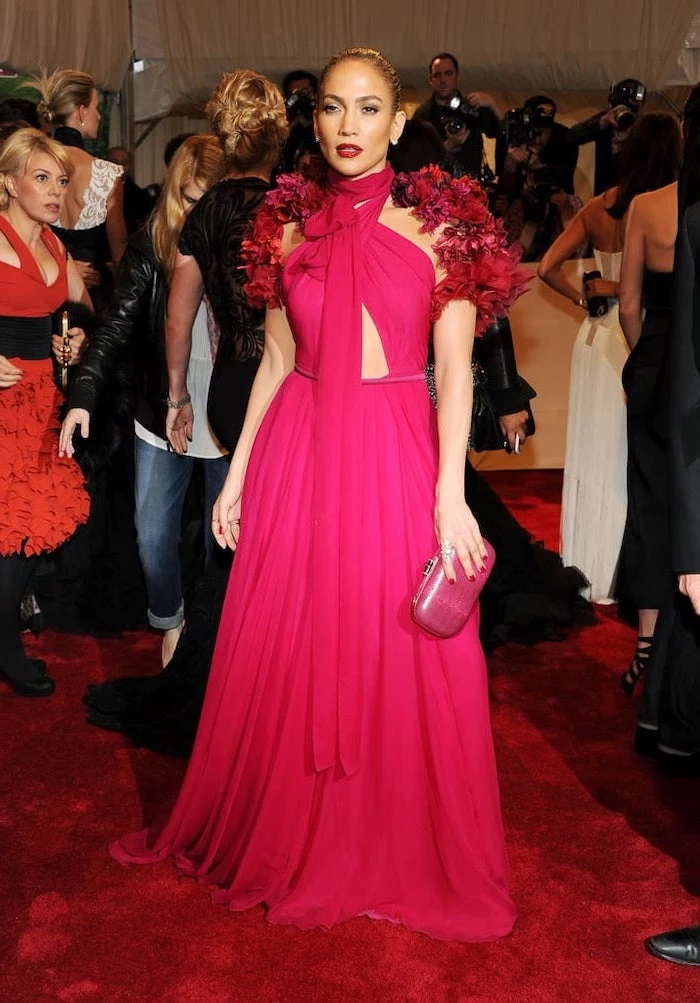
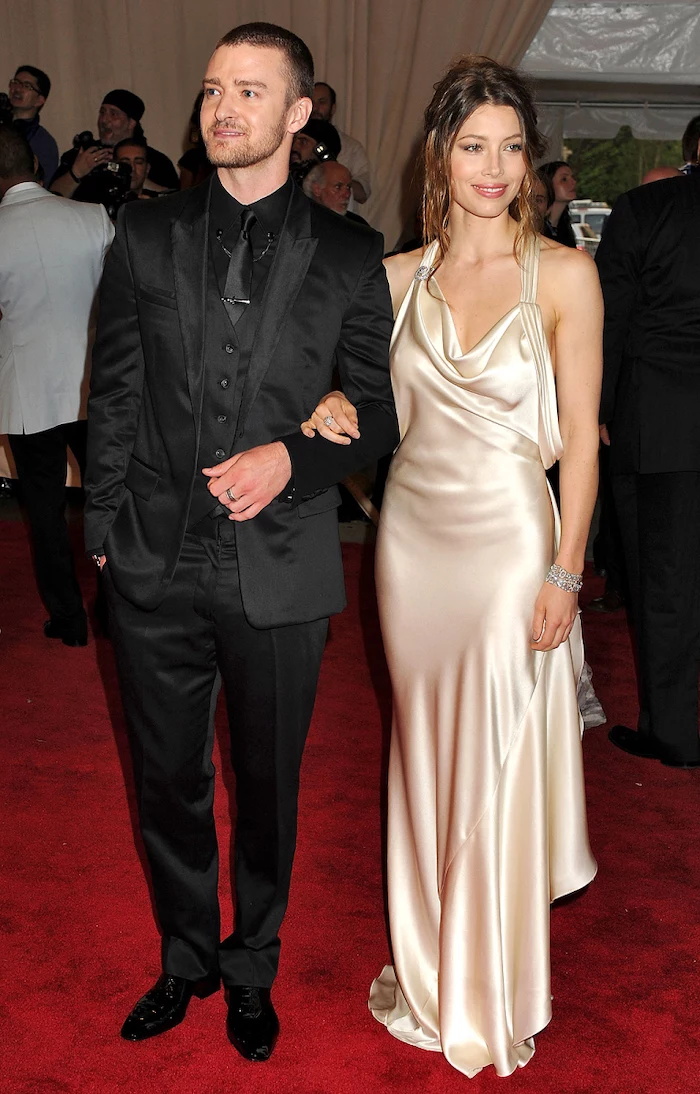
- A discreet, nearly invisible panel of illusion tulle.
- A delicate overlay of Chantilly or Alençon lace.
- Slightly raising the ‘V’ point by just an inch or two.
These are three simple ways a dressmaker can adapt a dramatic plunging neckline from the red carpet to provide a bit more security and coverage, without sacrificing the design’s daring spirit.

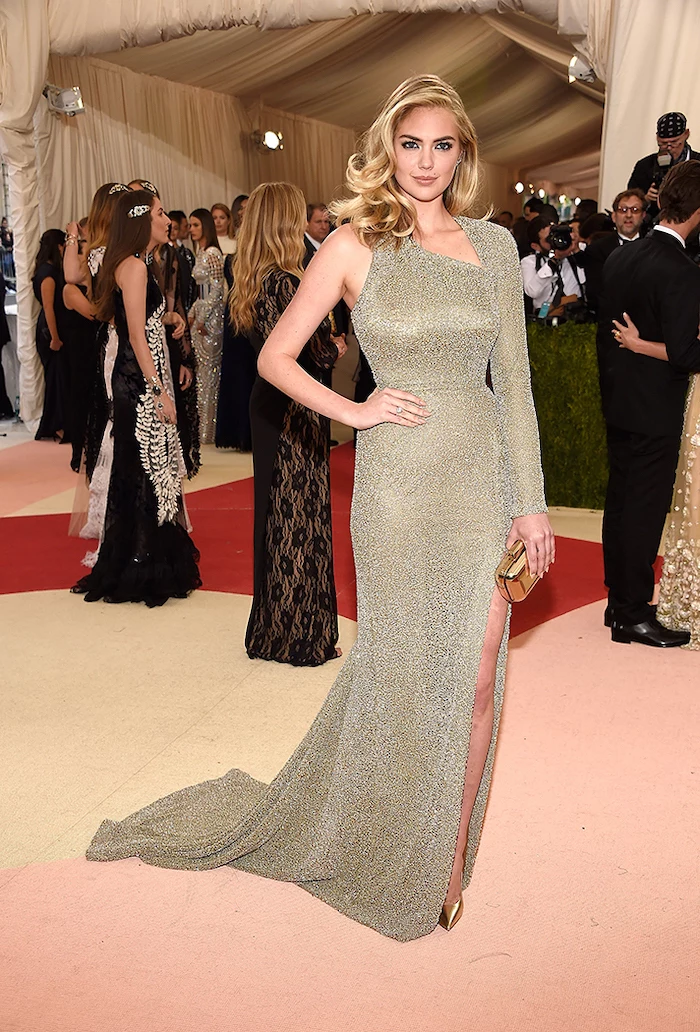
Don’t underestimate the power of color. While black is classic and red is bold, consider the nuance. A deep emerald green suggests sophisticated luxury, a dusty rose feels romantic and modern, and a shimmering liquid gold or silver is pure, unapologetic glamour. The color of your gown is the first thing people will notice.
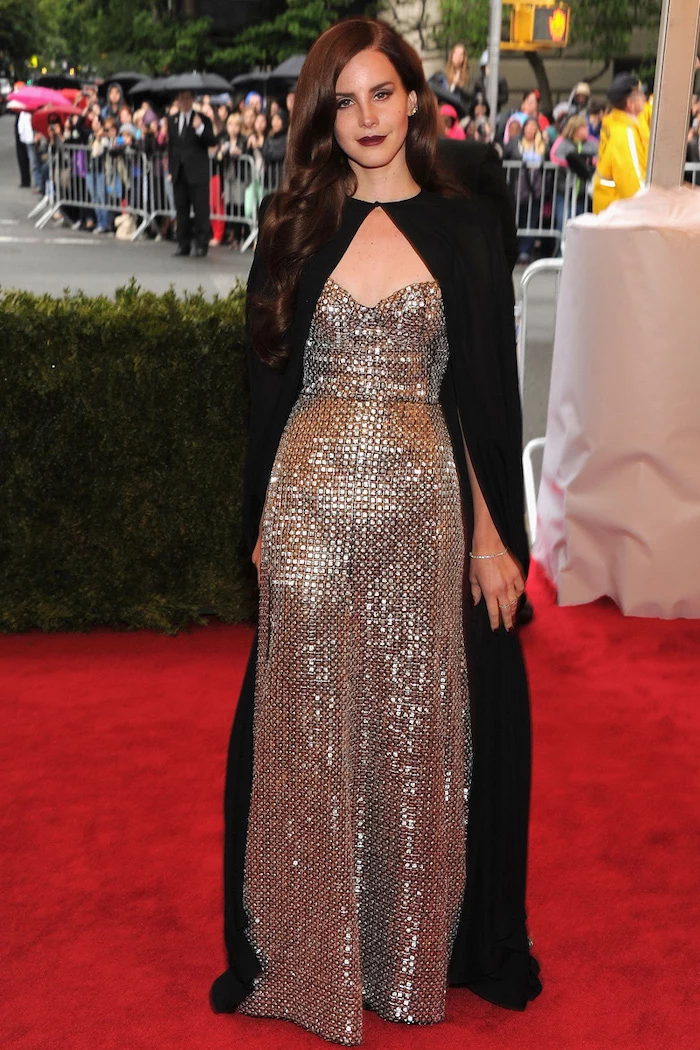
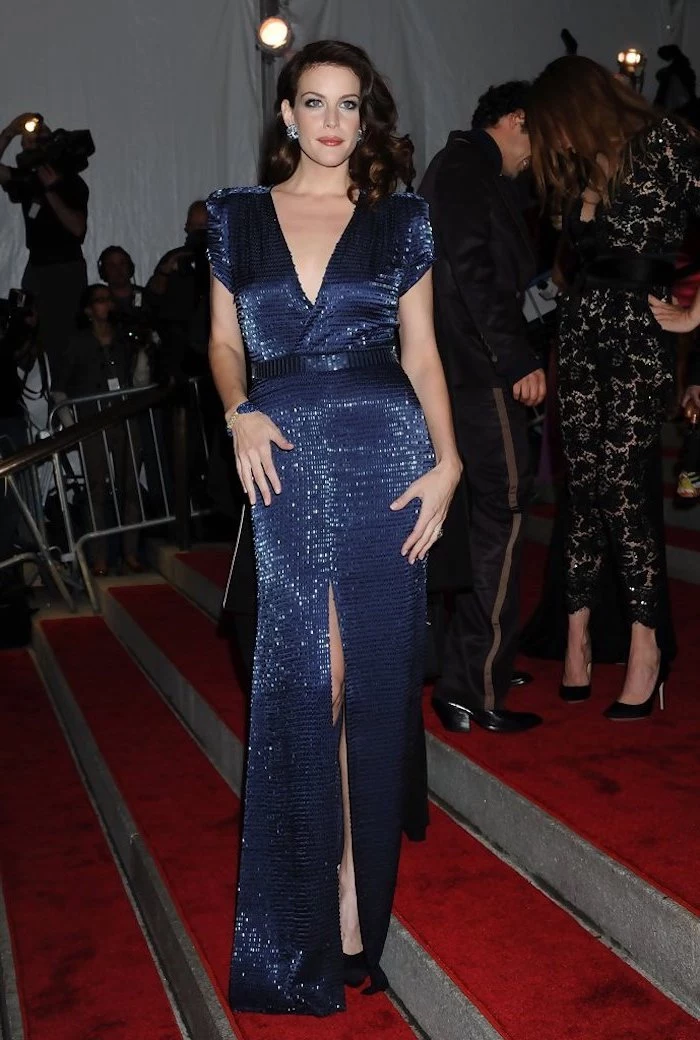
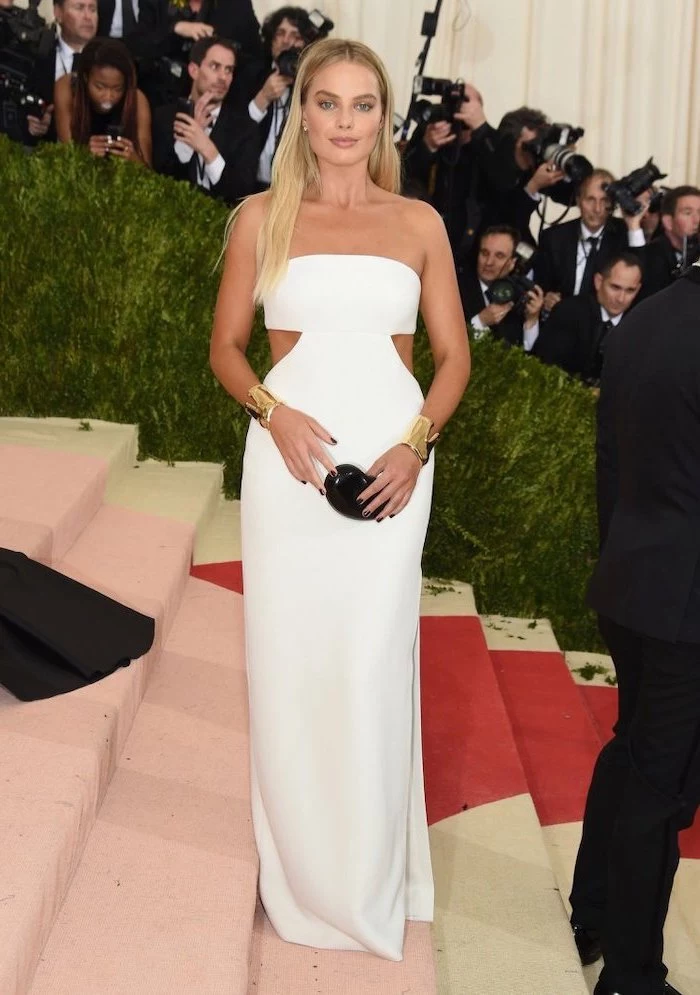
What’s the difference between sequins, paillettes, and crystals?
Think of it as a scale of sparkle. Sequins are small, flat, and offer a shimmering, all-over texture. Paillettes are their larger, more dramatic cousins, creating bold flashes of light. Crystals (like Swarovski) are faceted glass, which refracts light for a dazzling, multi-dimensional glitter. Often, the most luxurious looks mix all three for ultimate depth.
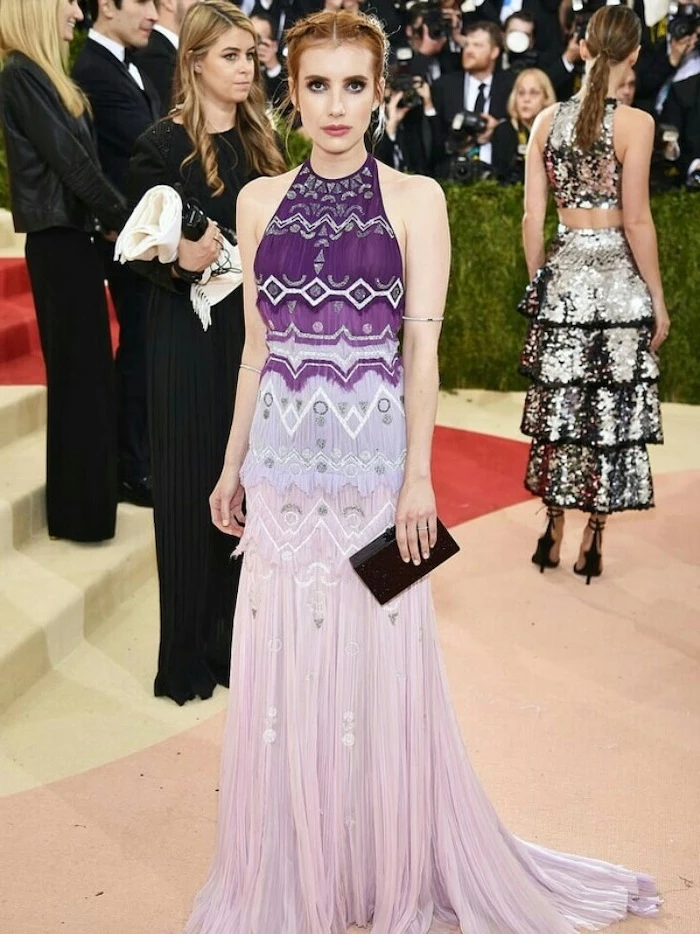
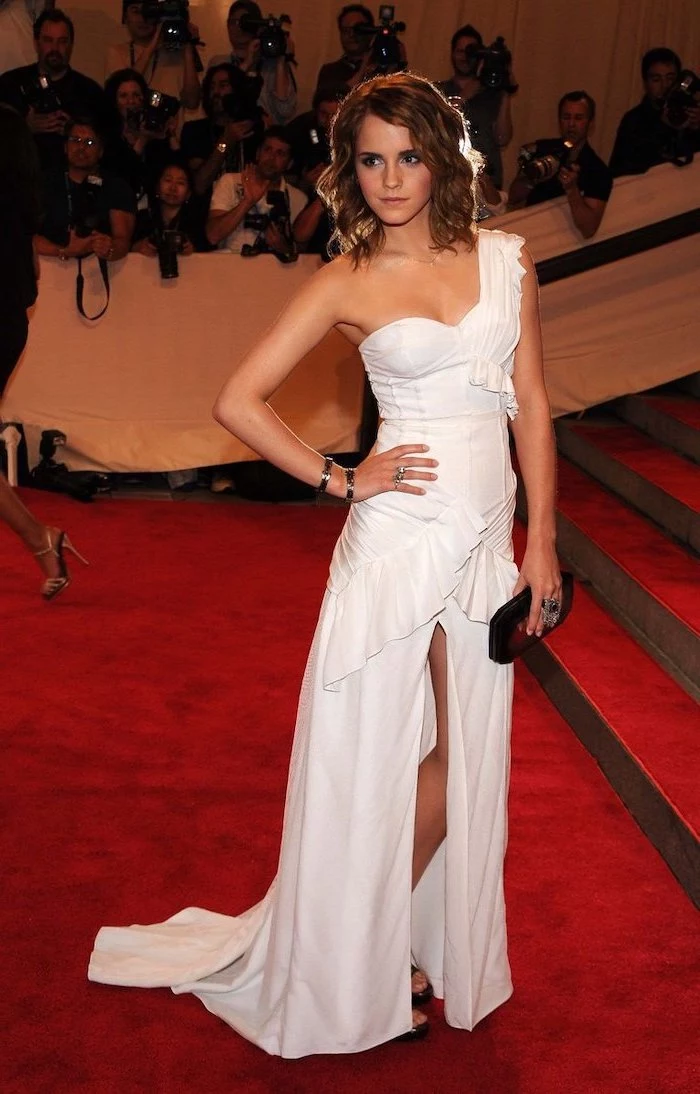
Rihanna’s iconic 2015 canary-yellow Met Gala gown by Guo Pei weighed a reported 55 pounds (25 kg) and featured a 16-foot train.
This is a perfect example of a dress designed purely for a visual moment. For a real event, capturing its spirit would mean using a much lighter fabric, like silk organza, and engineering a detachable or heavily bustled train.
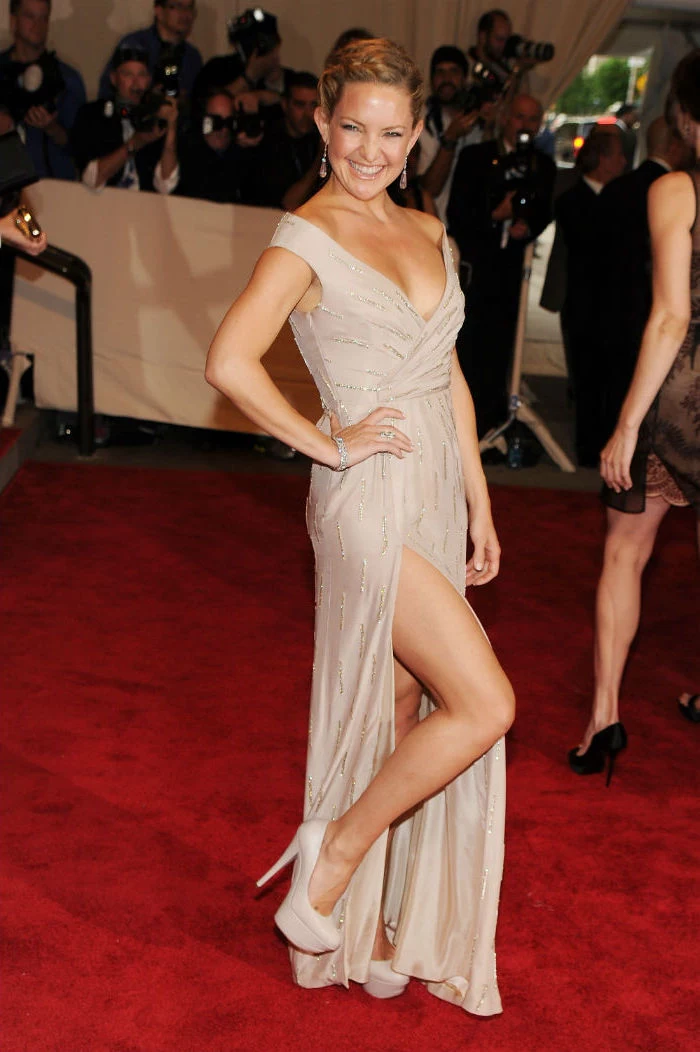
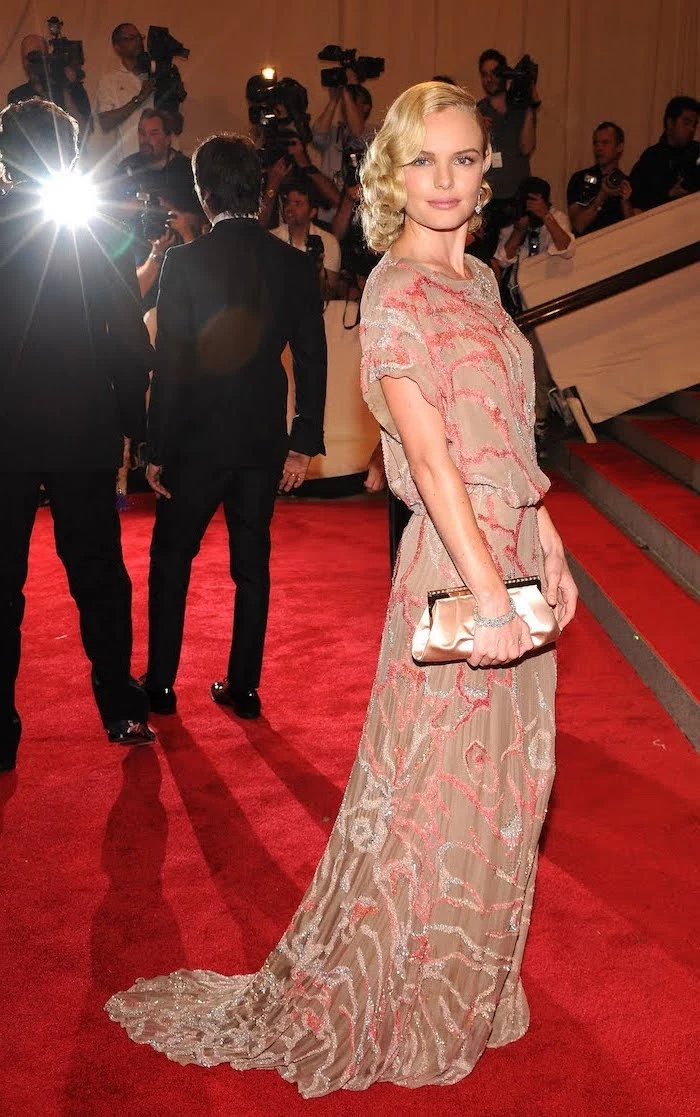
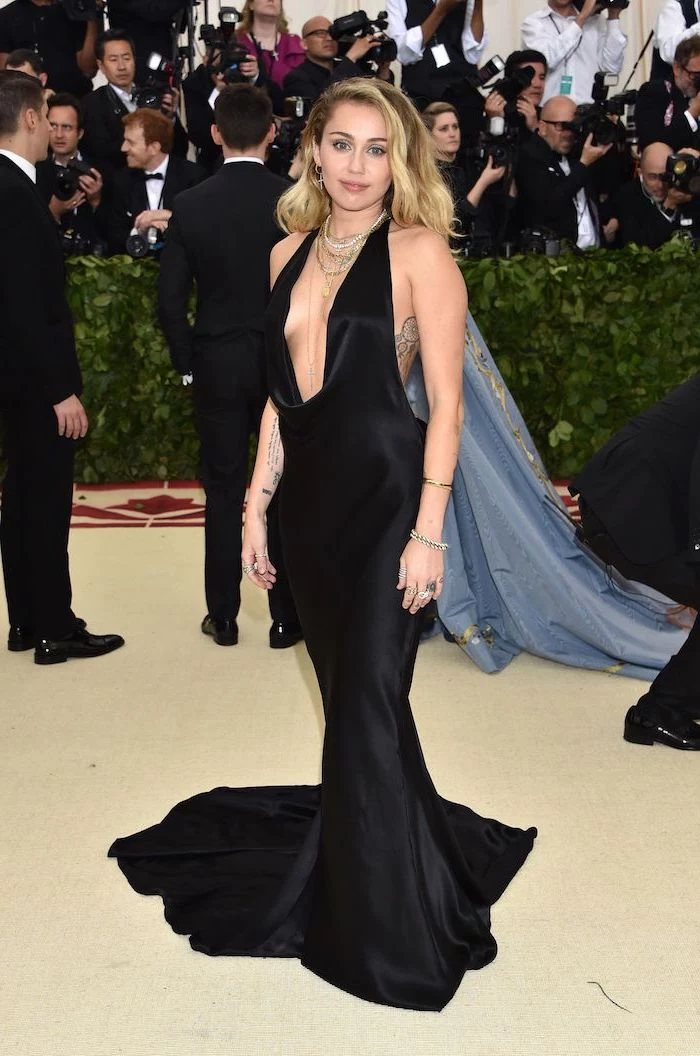
One of the biggest mistakes? Forgetting the venue. That magnificent ballgown with a massive train looks incredible on a wide red carpet, but it’s a nightmare in a crowded cocktail reception or a venue with tightly packed dinner tables. Always match the scale of your dress to the logistics of your event.
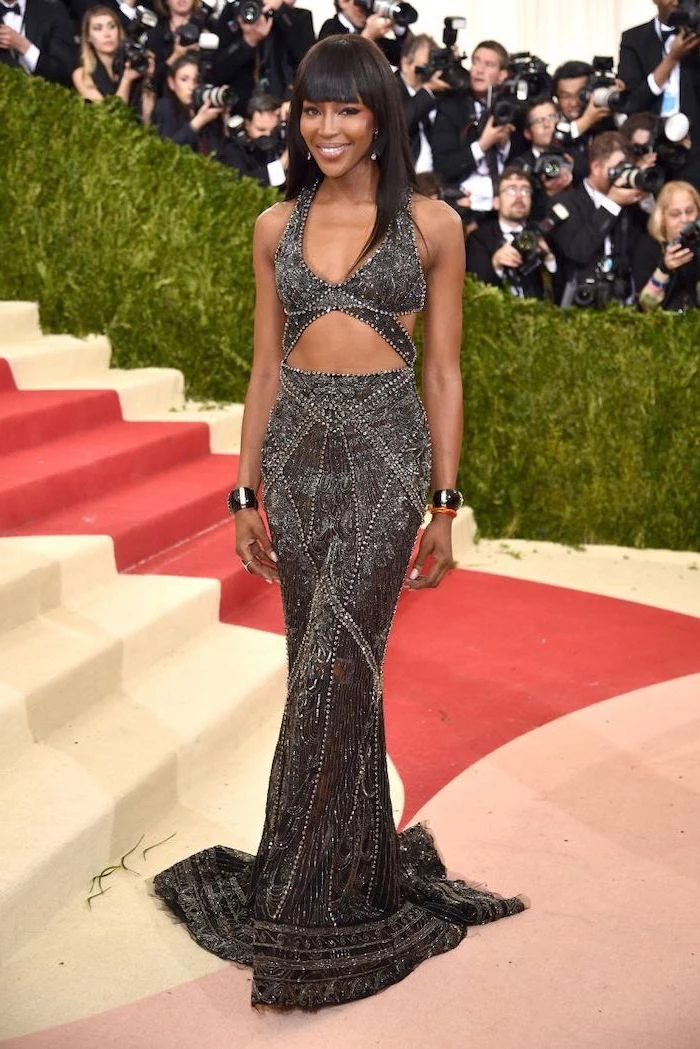
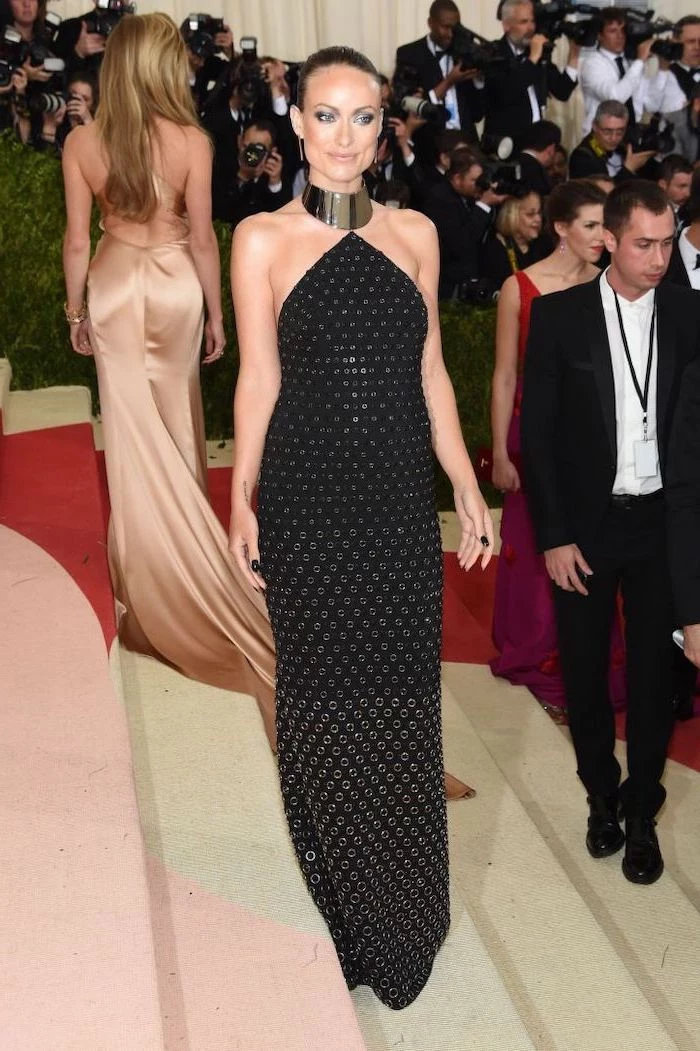
The 1930s Jean Harlow-style bias-cut gown is the ultimate blueprint for ‘liquid glamour’. Cut on the diagonal grain of the fabric, it clings and drapes over the body’s curves in a way no straight-cut garment can. It’s the perfect, timeless foundation for a modern adaptation, looking just as stunning in simple silk as it does covered in beads.
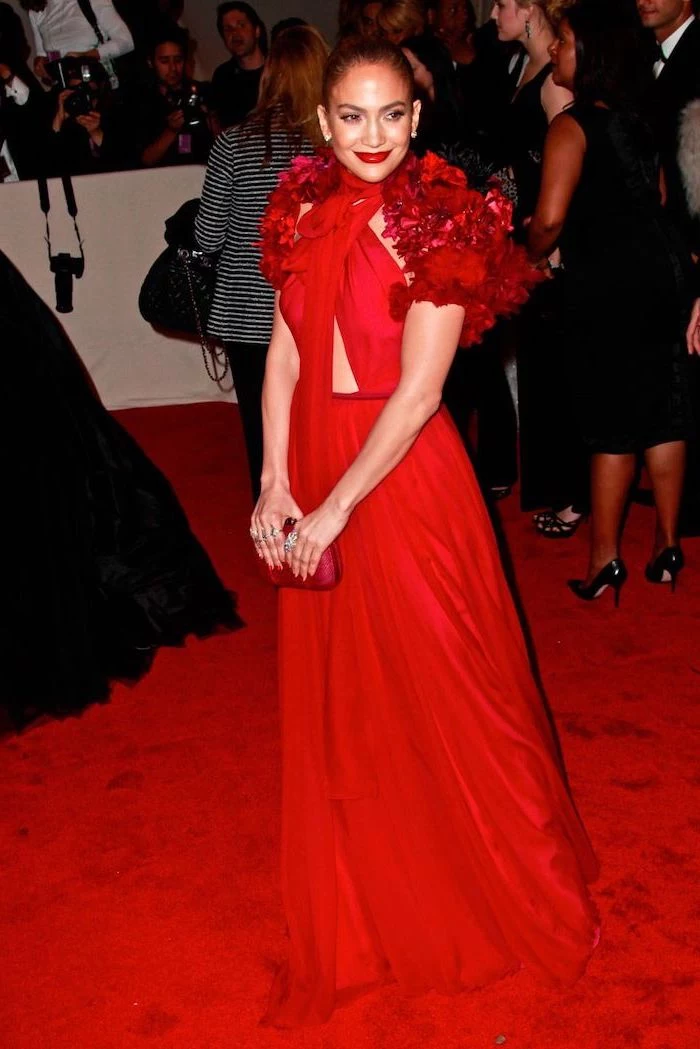
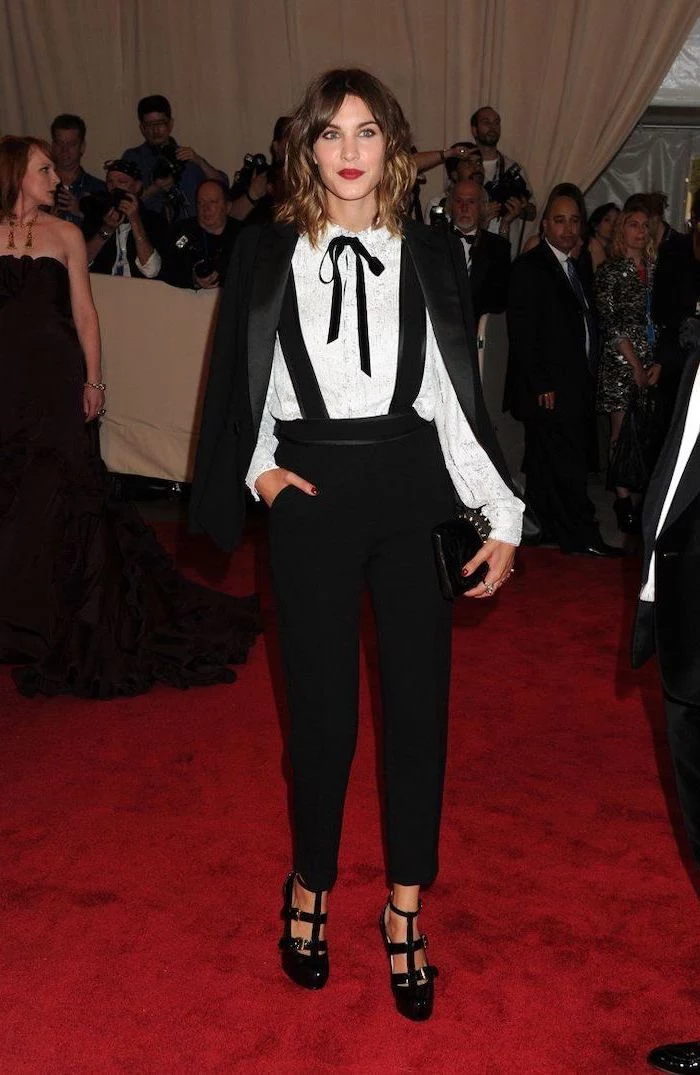
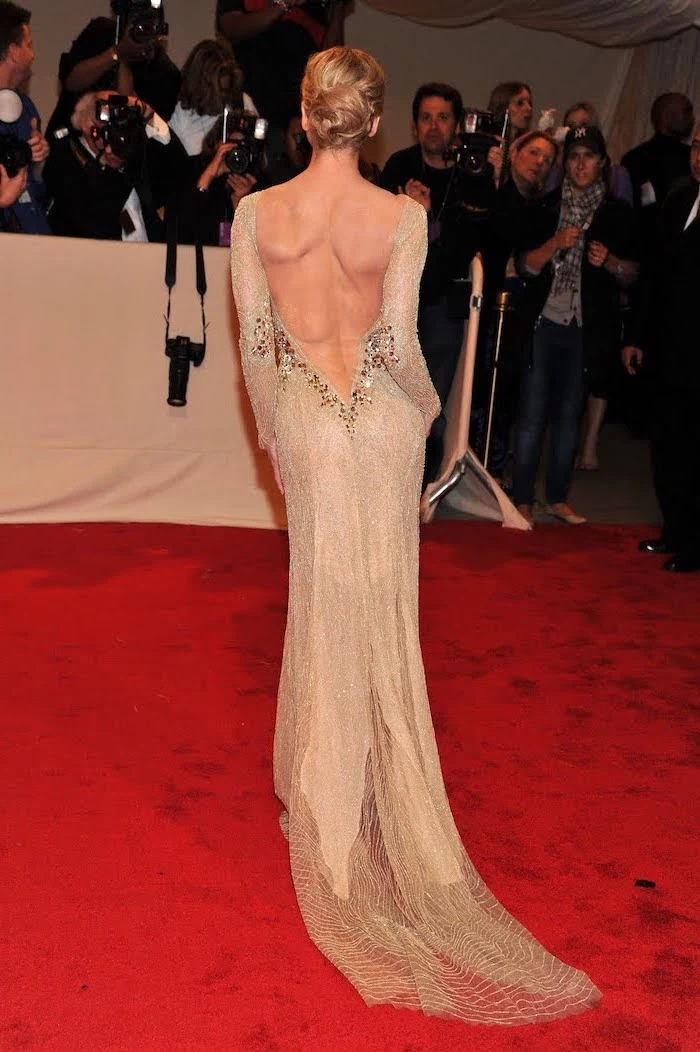
Hand Draping: The fabric is molded and pinned directly onto a dress form, creating organic, sculptural lines unique to the design. It’s an art form favored by houses like Madame Grès and Azzedine Alaïa.
Flat Pattern-Making: The garment is engineered on paper first using precise measurements. This method is excellent for precision, symmetry, and replicable designs.
The most masterful gowns often begin with draping for creativity, then are perfected with flat-pattern techniques for a flawless fit.
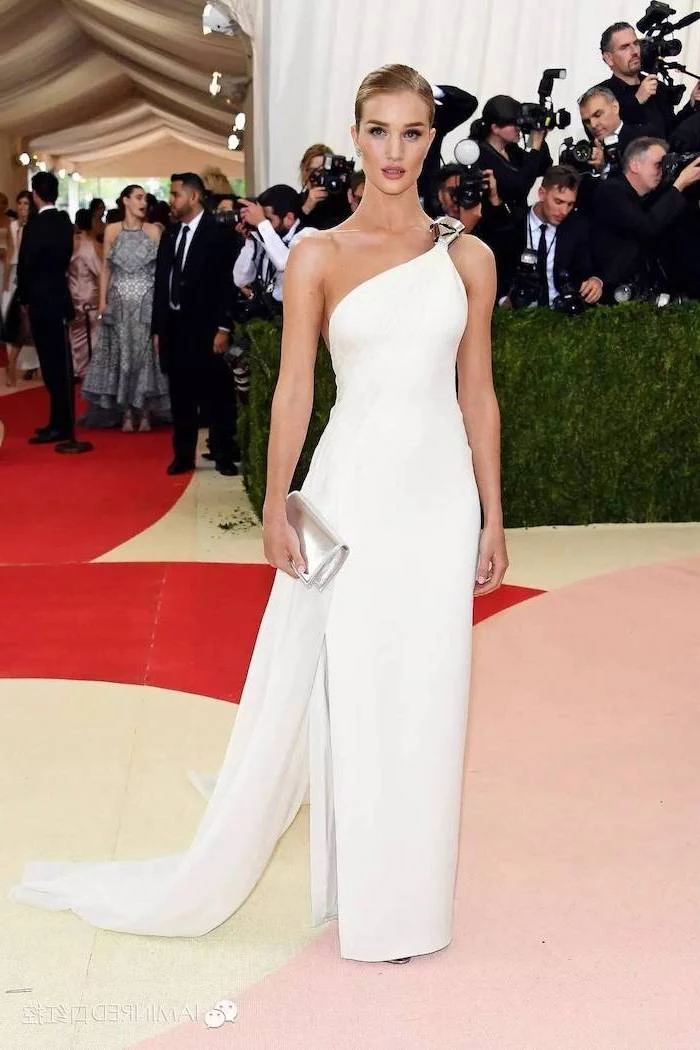
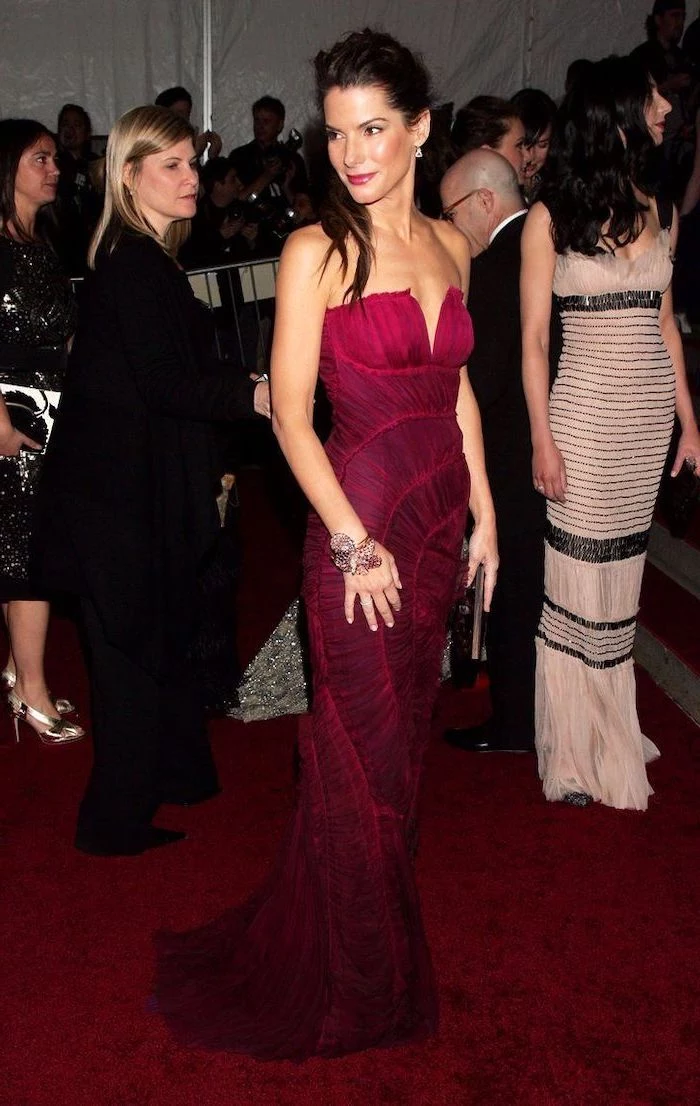
Looking for inspiration? Study the work of red carpet masters like Elie Saab and Zuhair Murad. They are geniuses at creating ethereal, embellished fantasies that feel both opulent and delicate. Their use of cascading beadwork, feather-light tulles, and perfectly placed embroidery is a masterclass in translating fairytale dreams into wearable art.
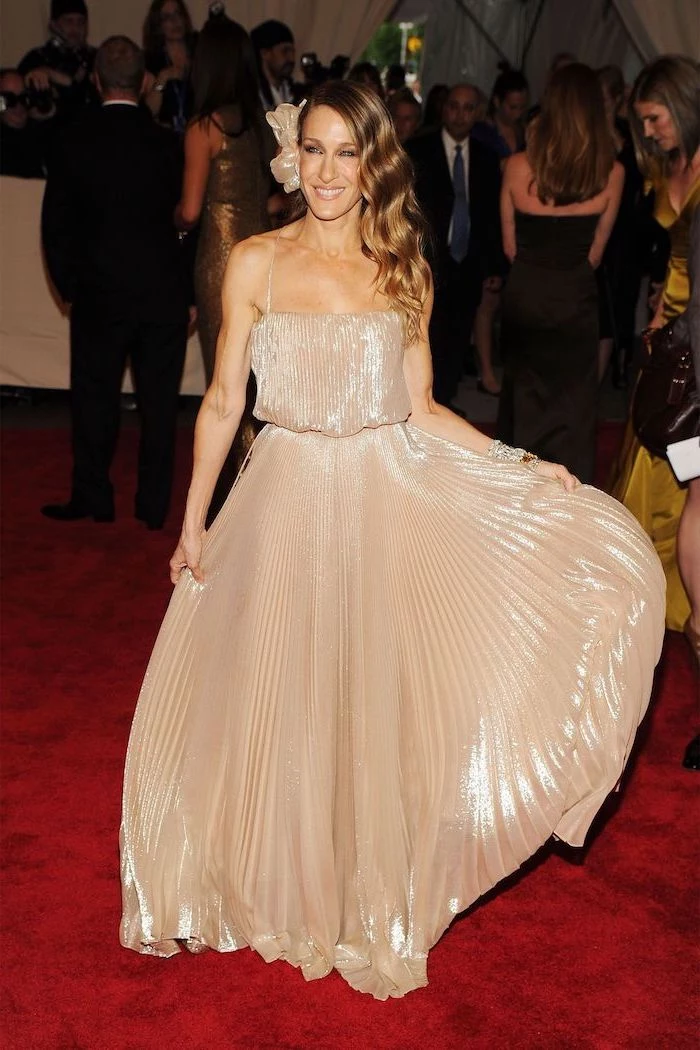

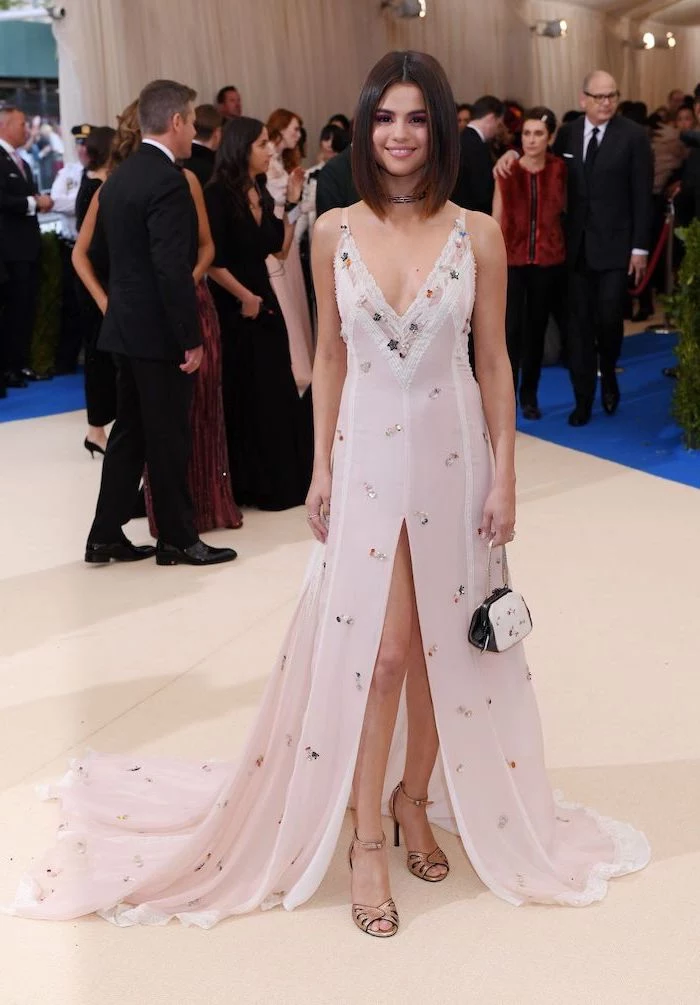
An impressive silhouette doesn’t have to mean immense weight. To create volume without heavy petticoats, professionals use lightweight tricks. A ‘horsehair braid’ sewn into the hemline gives a structured, wavy finish. Layers of fine, stiff ‘crinoline tulle’ can build shape from within without adding pounds. The result is all the drama, with none of the drag.
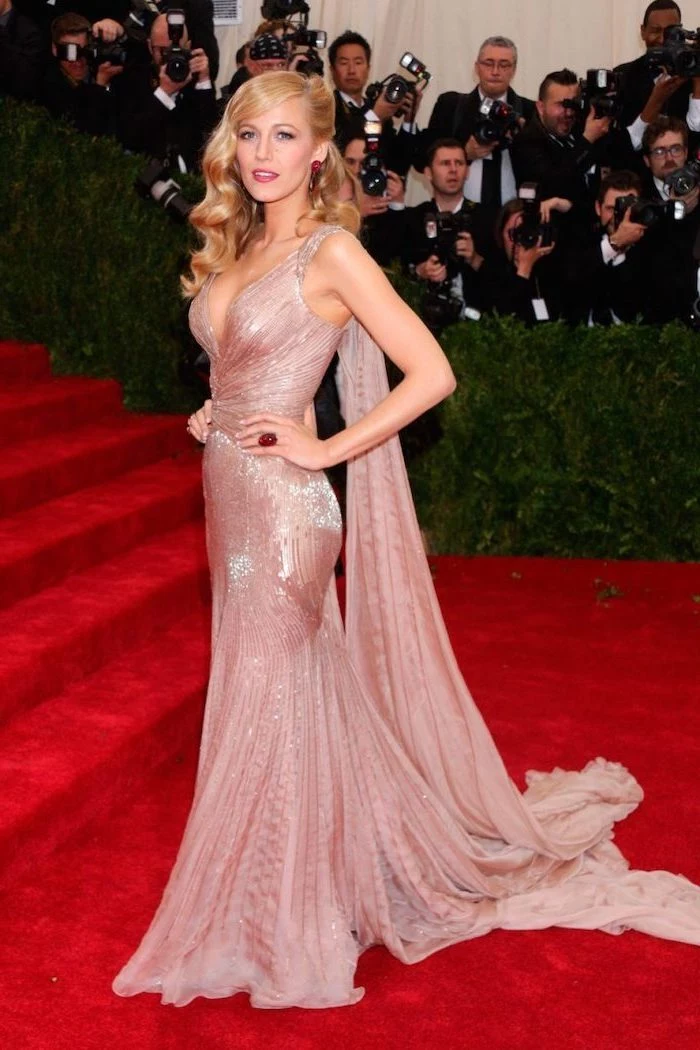
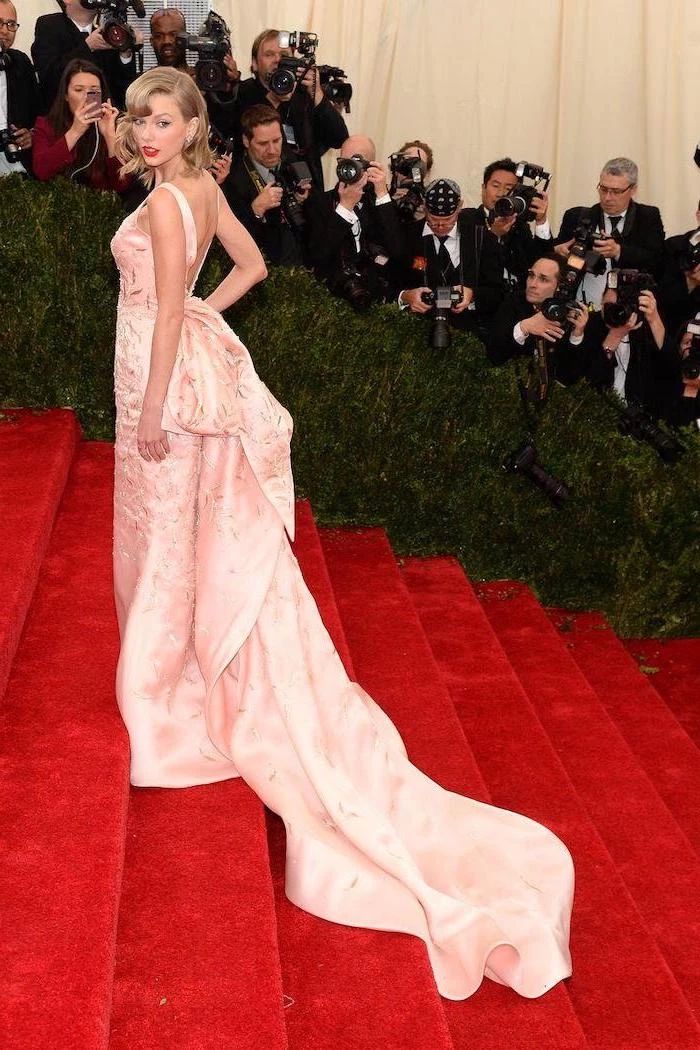
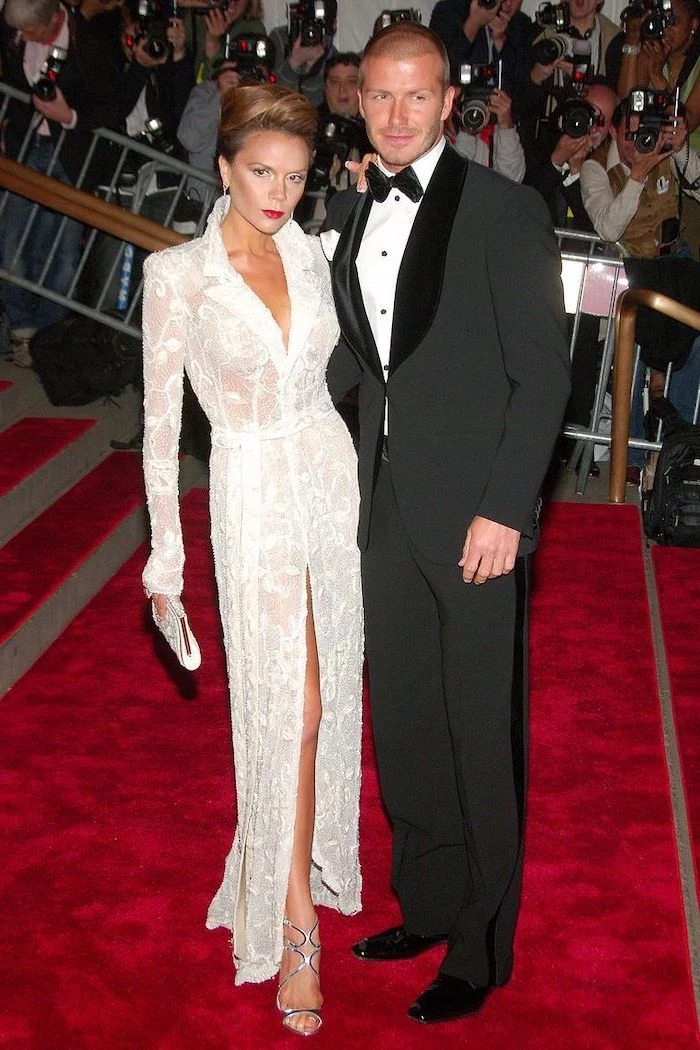
A single yard of high-quality silk gazar—a fabric famed for holding sculptural shapes, beloved by Cristóbal Balenciaga—can cost upwards of $150.
This is why the muslin fitting is so crucial. It ensures every detail is perfect before committing to the final, precious material. It’s the ultimate measure-twice, cut-once philosophy.
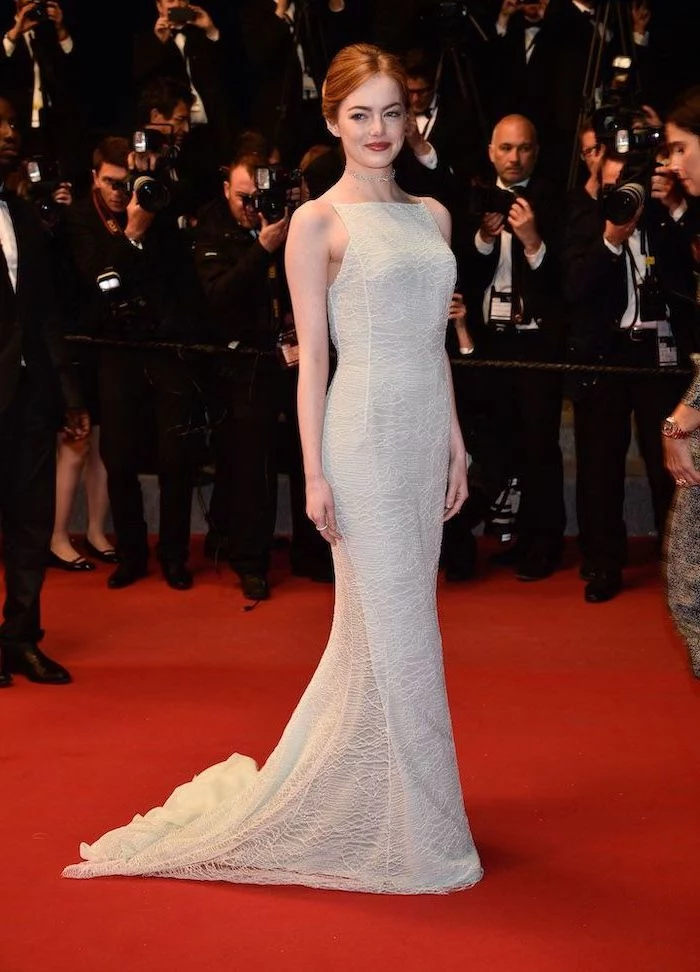
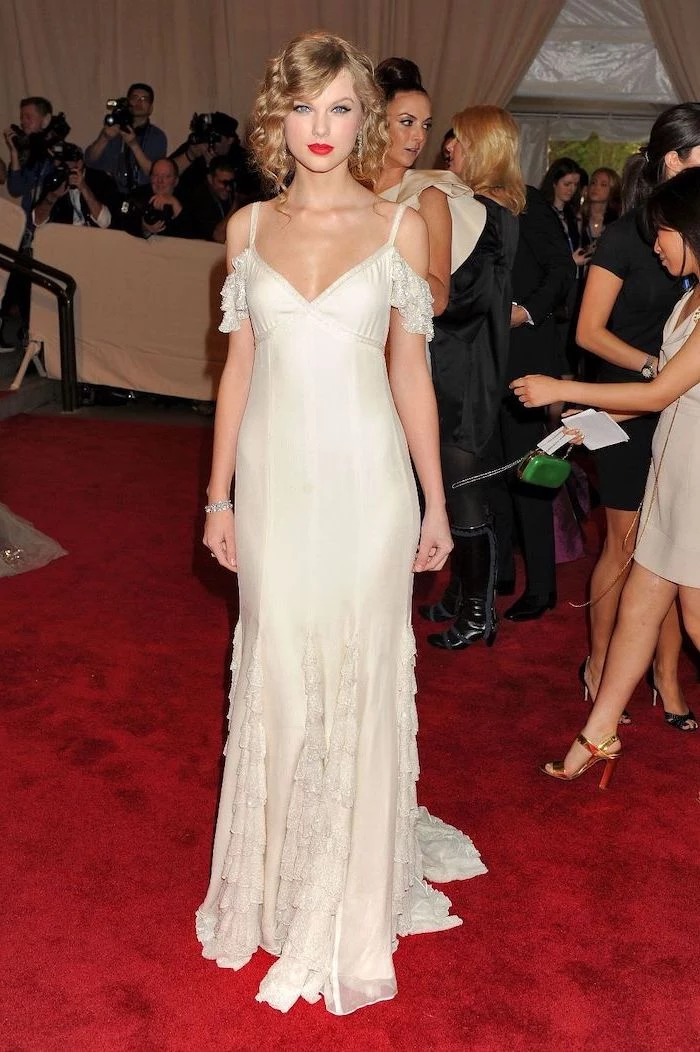
For the ambitious home dressmaker wanting to try beading, start with a tambour hook. This French embroidery tool, which looks like a tiny crochet hook, is used to apply beads and sequins from the reverse side of the fabric. It’s significantly faster than sewing each bead by hand and is the standard technique used in professional couture ateliers.
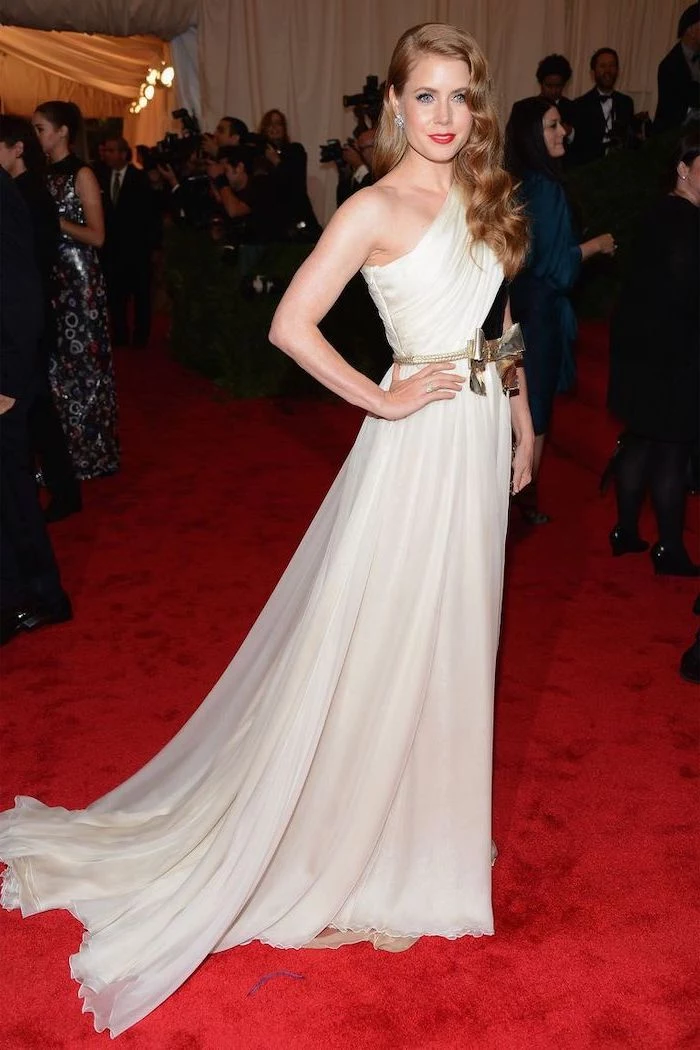
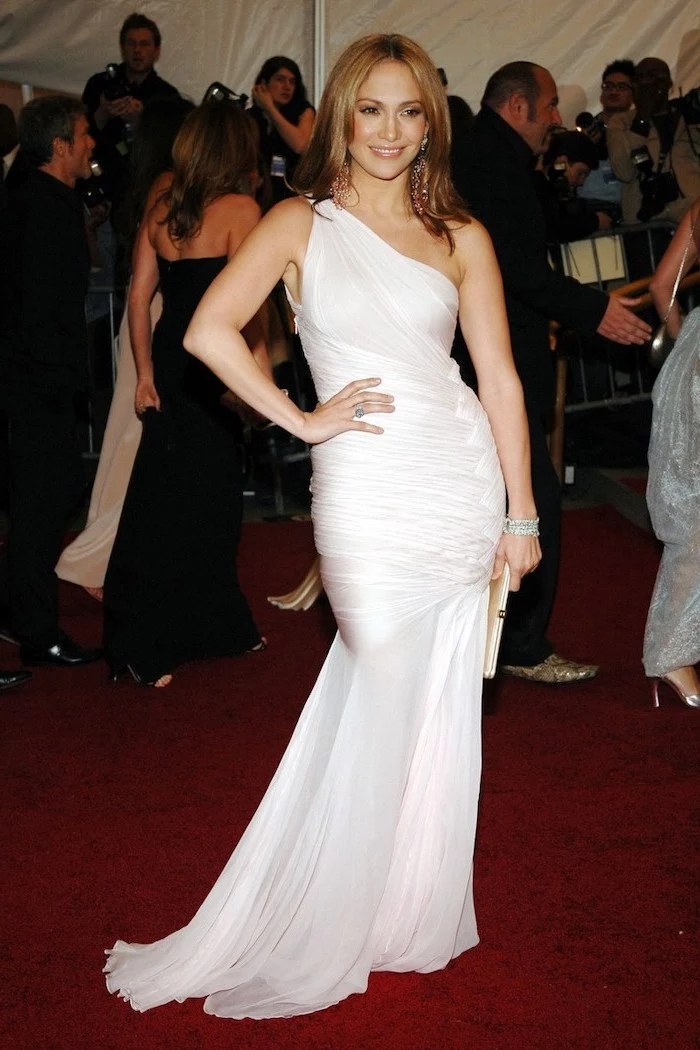
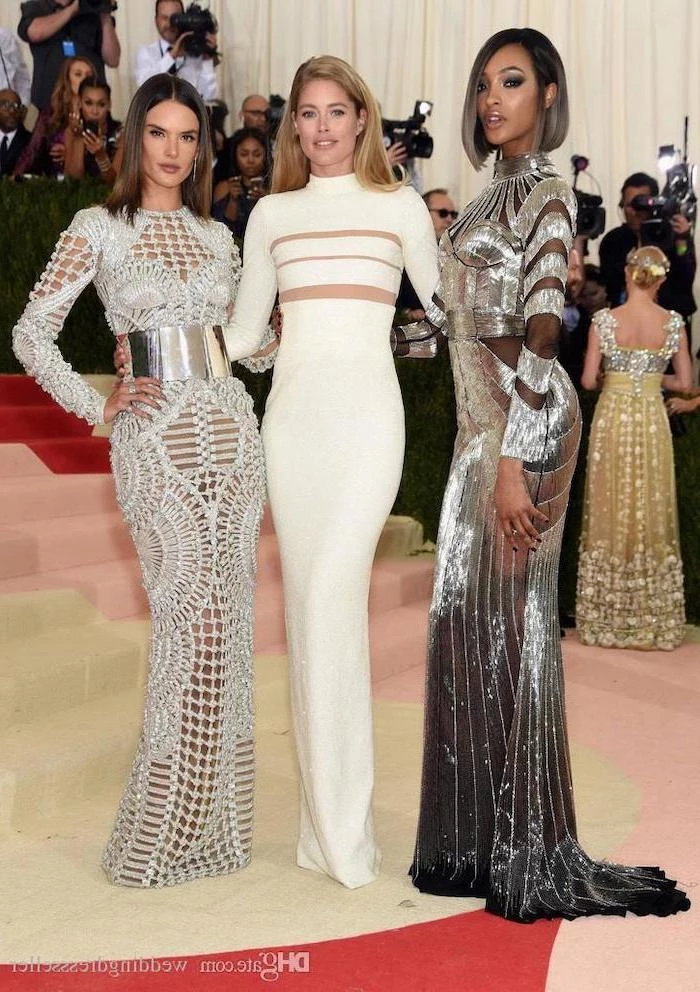
The Train Conundrum
A flowing train is the essence of red carpet drama, but it’s a hazard in a real-world party. Here’s how to manage it:
- The Bustle: A system of hidden hooks, loops, or ribbons that allows the train to be elegantly lifted and secured to the back of the dress for dancing.
- The Wrist Loop: A simple loop on the underside of the train that you can slip over your wrist to carry it.
- The Detachable Skirt: The ultimate two-in-one. Wear the dramatic overskirt for the ceremony or entrance, then remove it to reveal a sleeker dress for the reception.
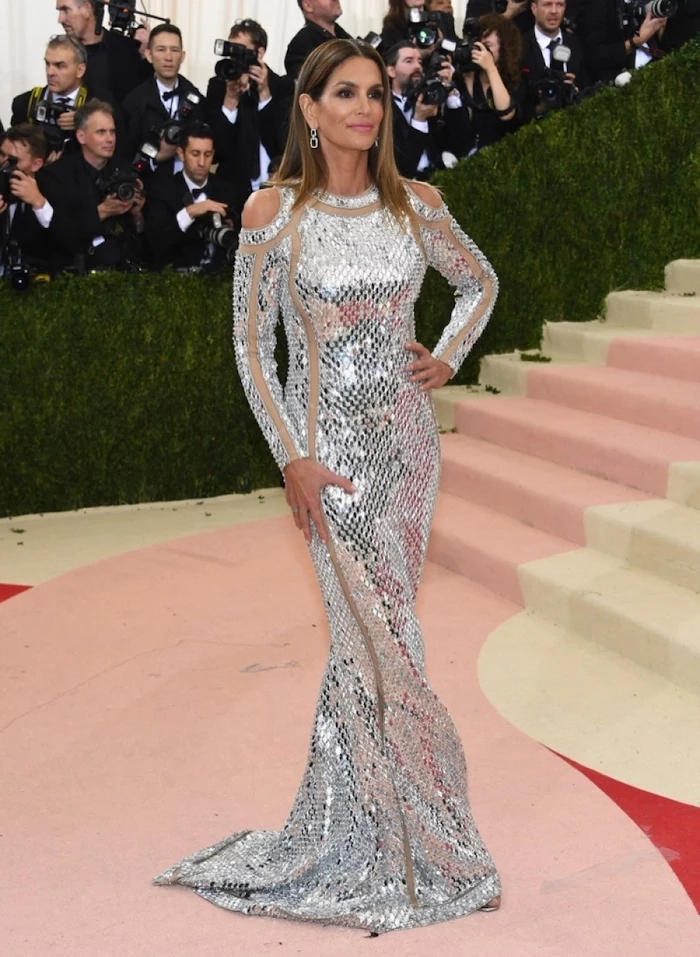
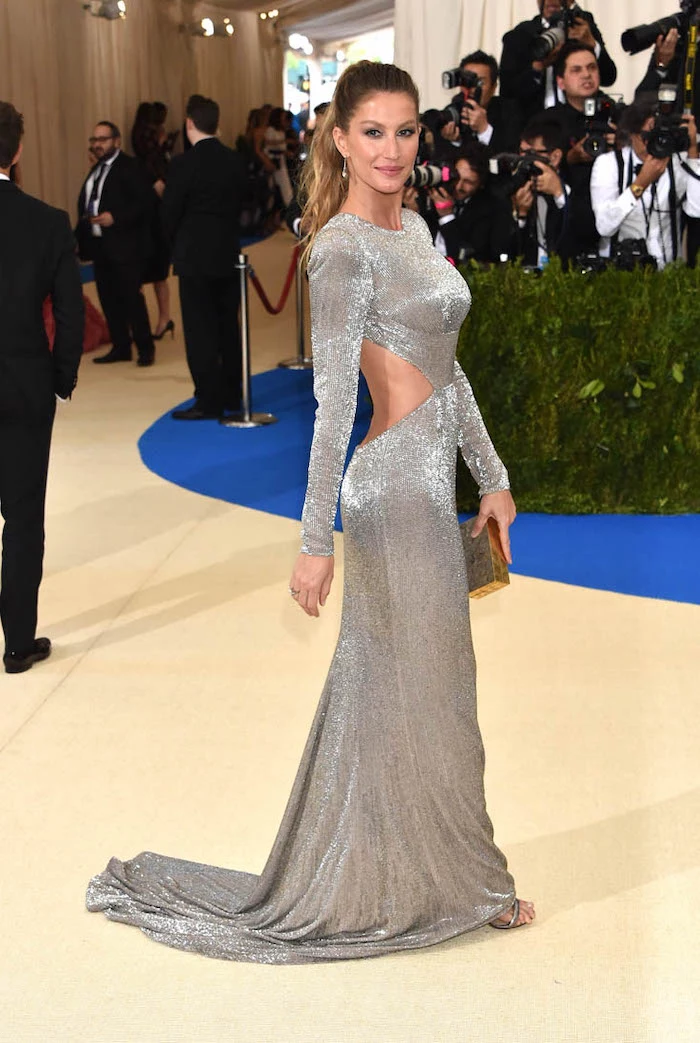
Once the party is over, your dress needs care. Never store it in a plastic dry-cleaner bag, which can trap moisture and cause yellowing. Instead, have it professionally cleaned by a specialist who handles embellished garments. For long-term storage, use an acid-free archival box, stuffing the bodice and folds with uncolored, acid-free tissue paper to help maintain its shape.
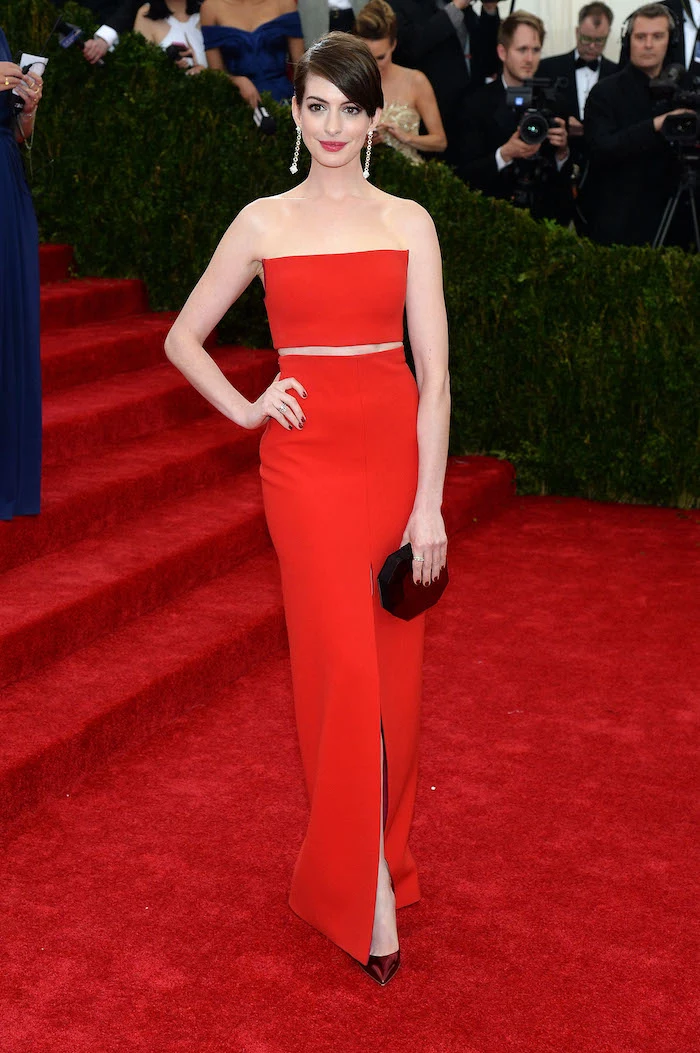
Think about texture mixing. Some of the most interesting gowns play with contrast. Imagine the slick, cool surface of a satin slip dress seen through a sheer overlayer of flocked polka-dot tulle. Or the unexpected combination of a structured Mikado silk bodice with a soft, feathery ostrich-trim skirt. This layering of materials adds runway-level depth and sophistication.

